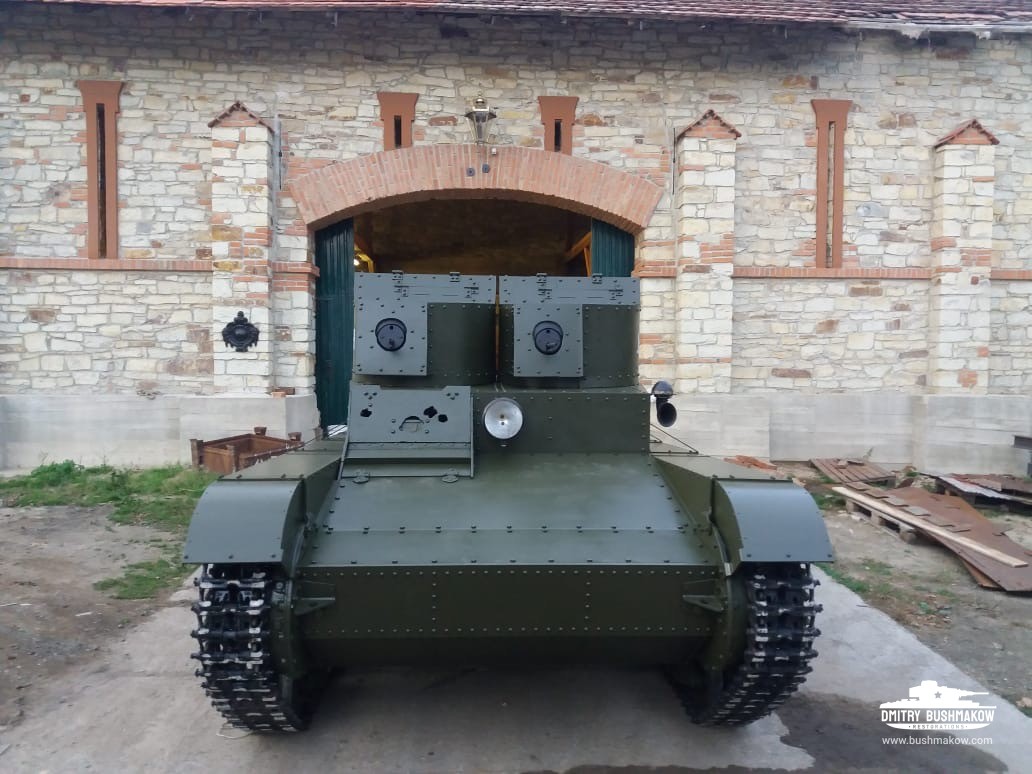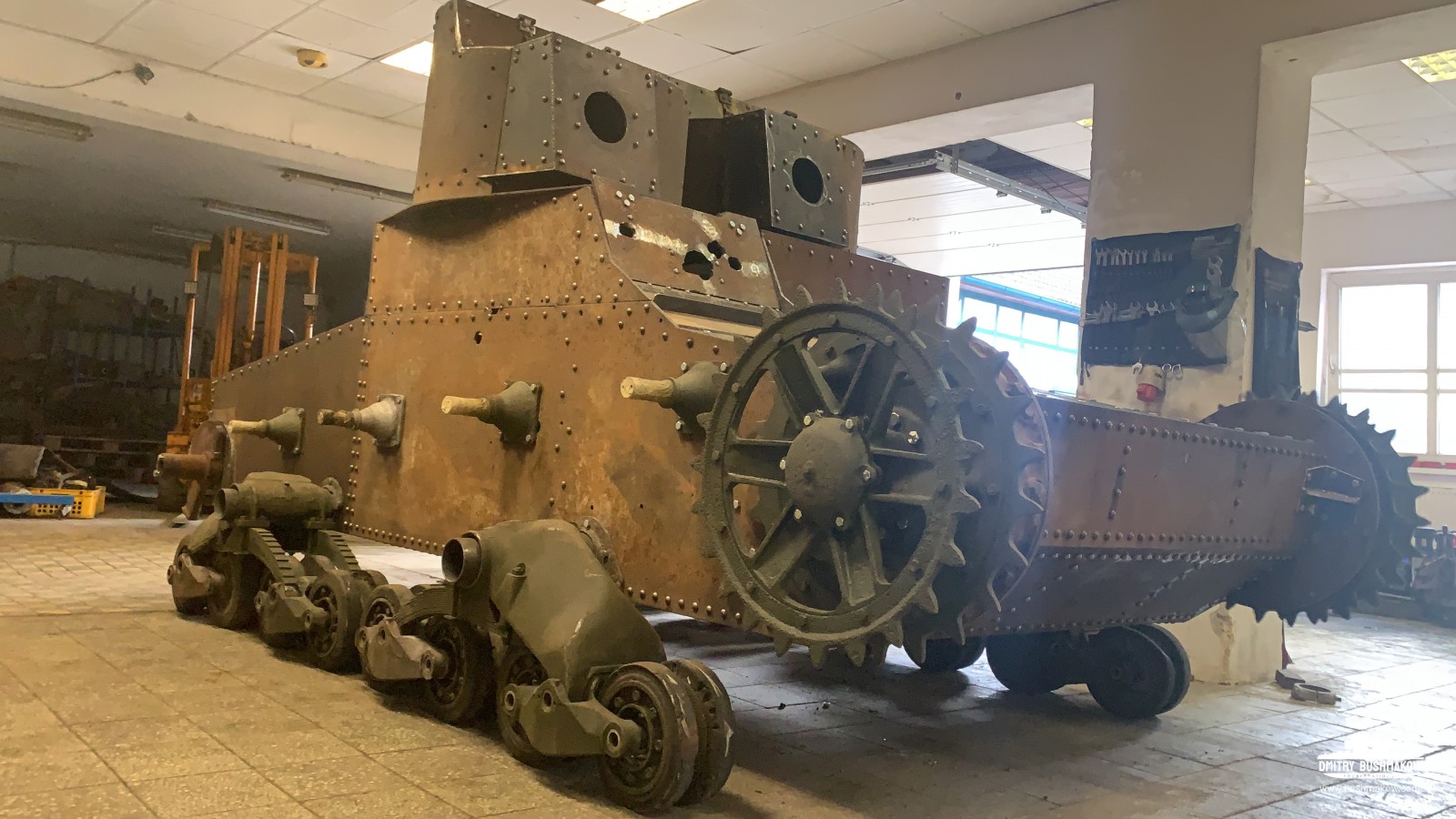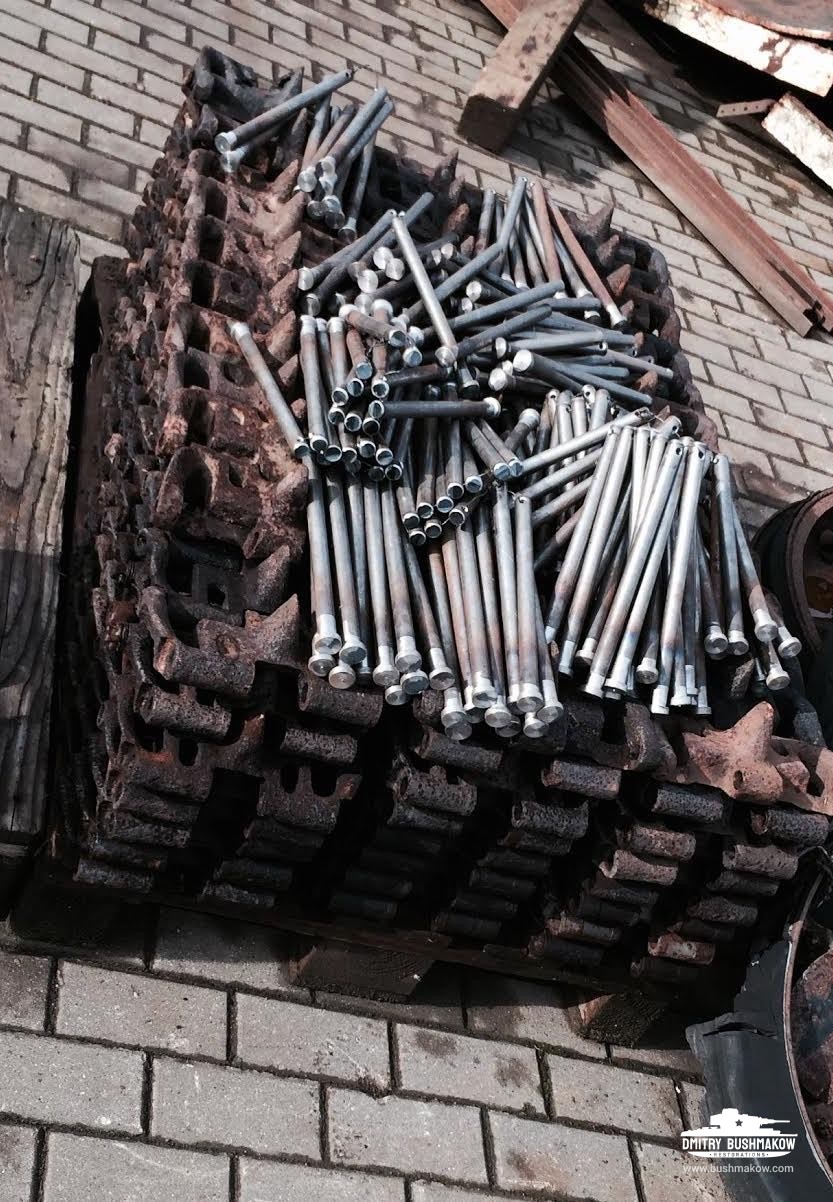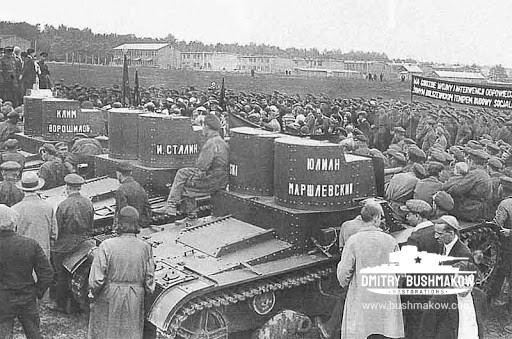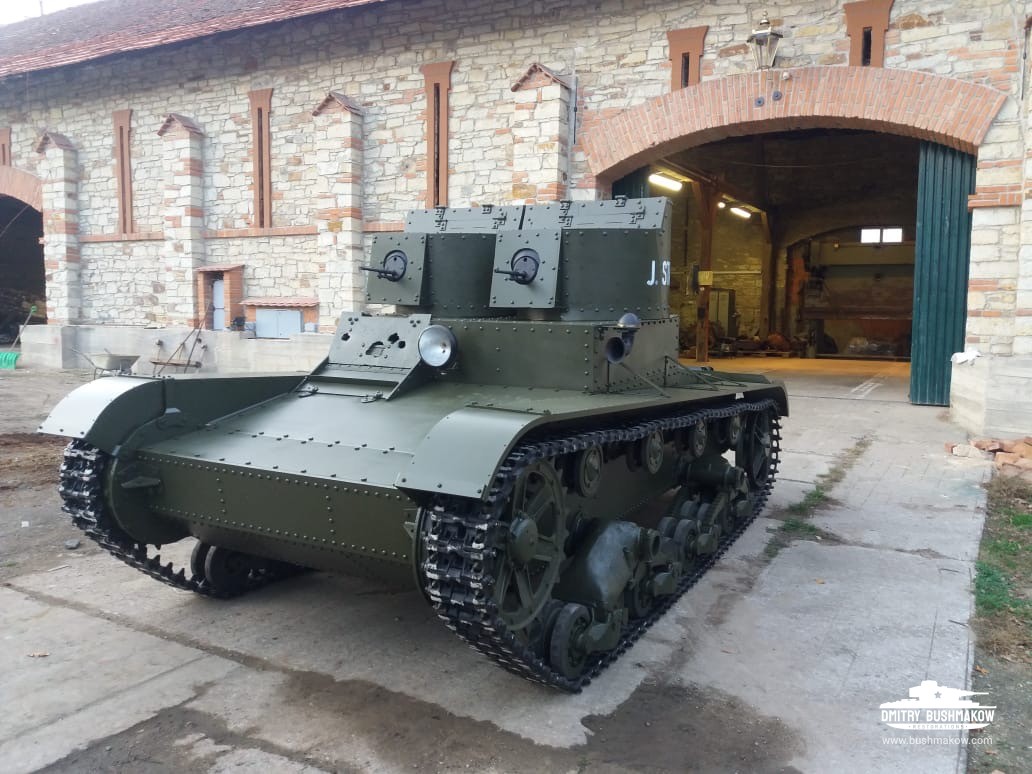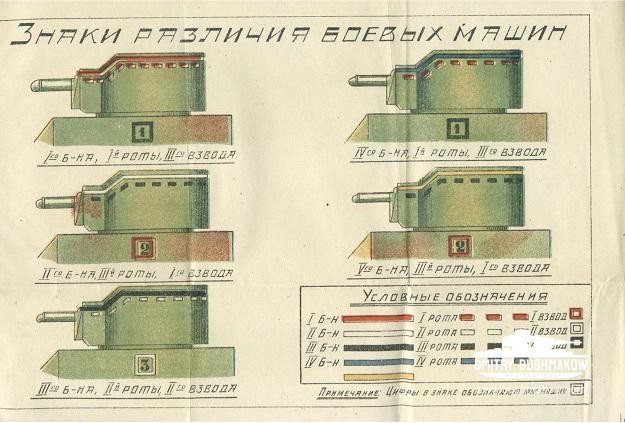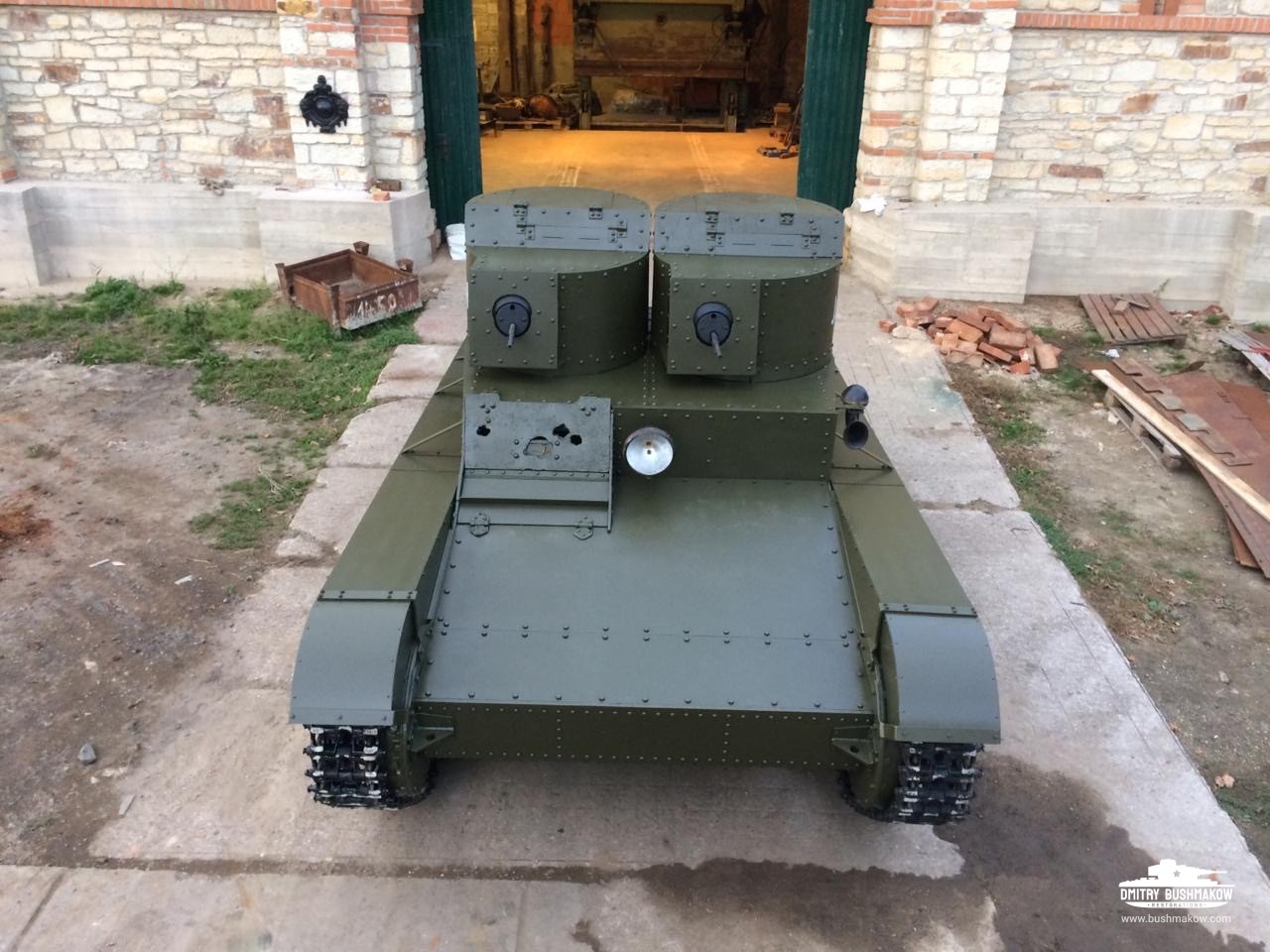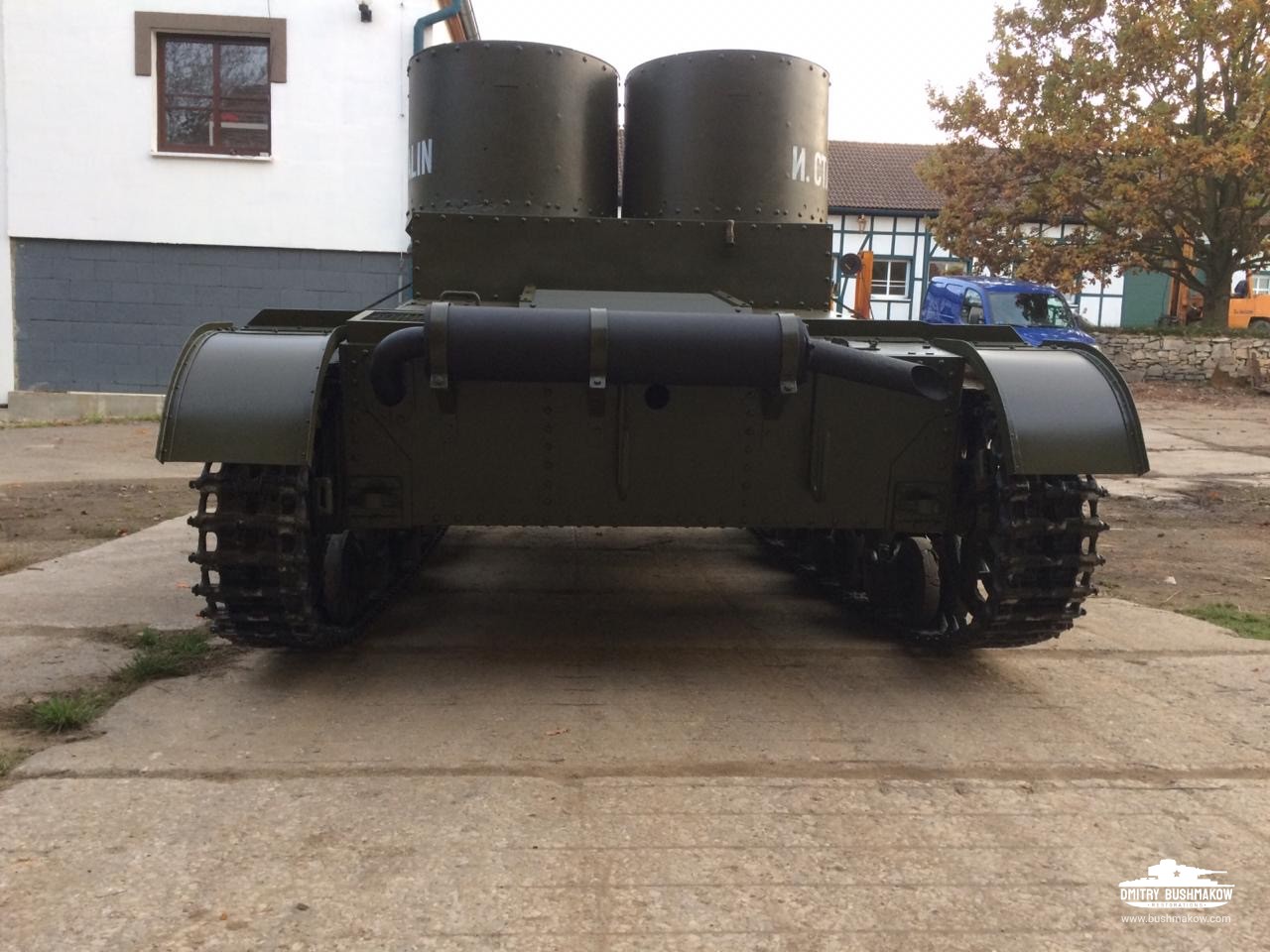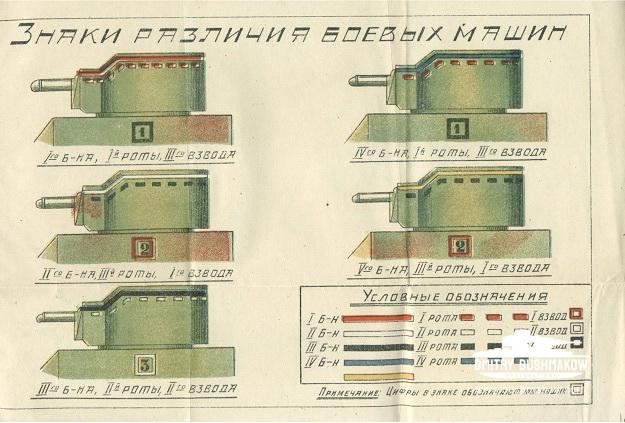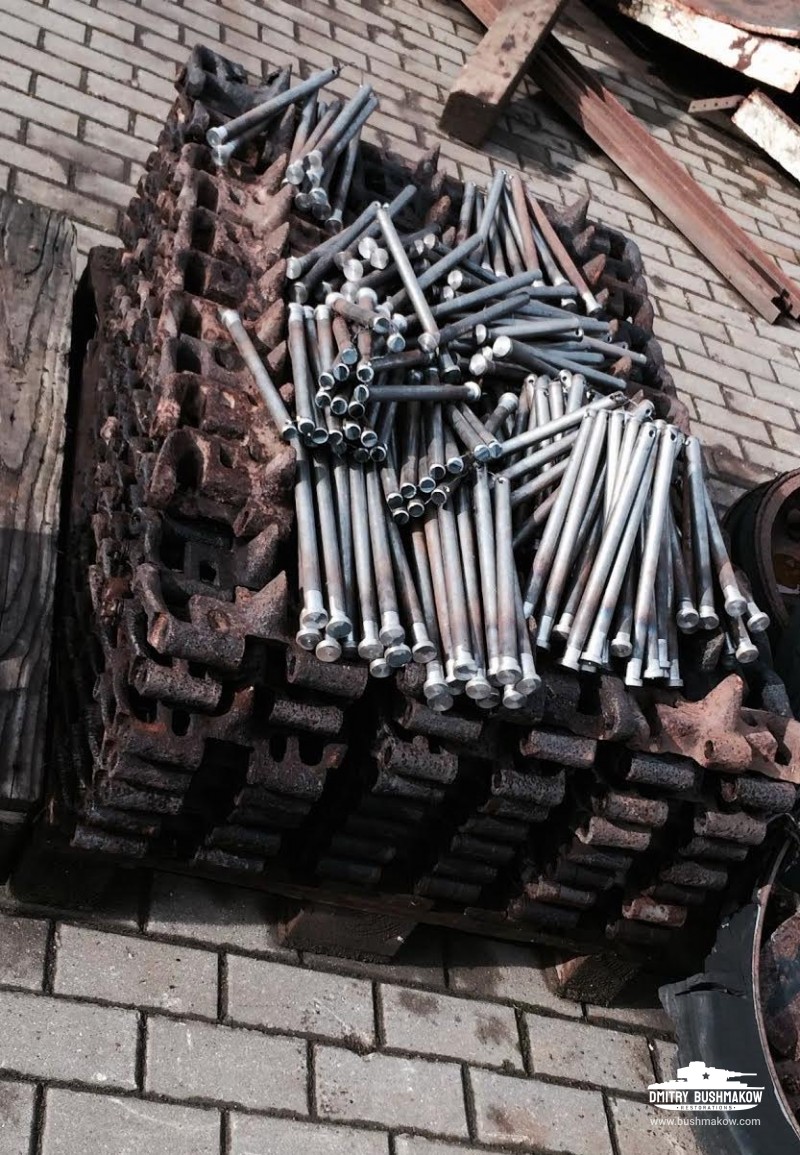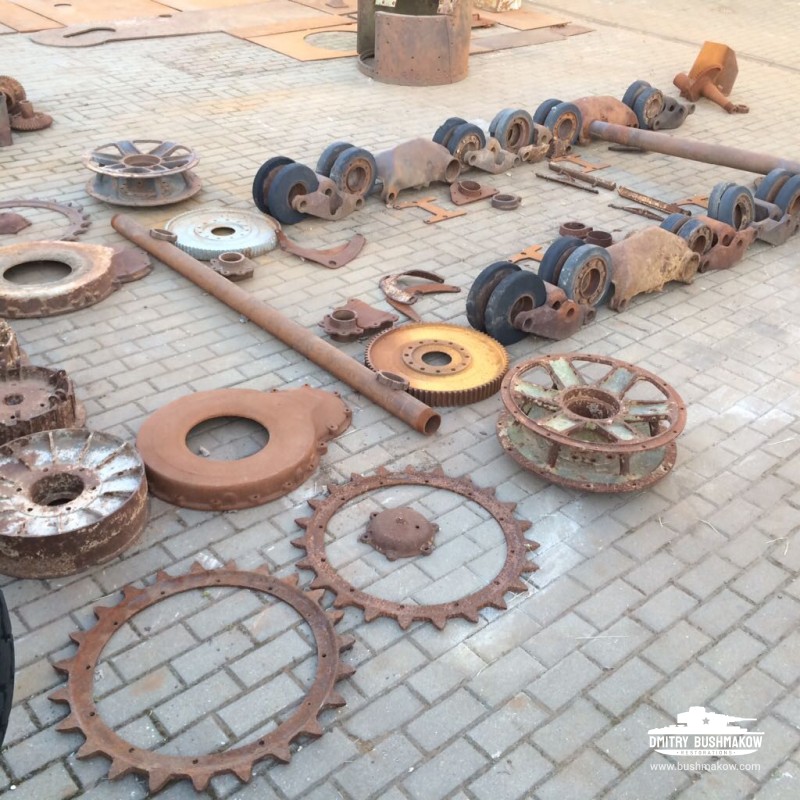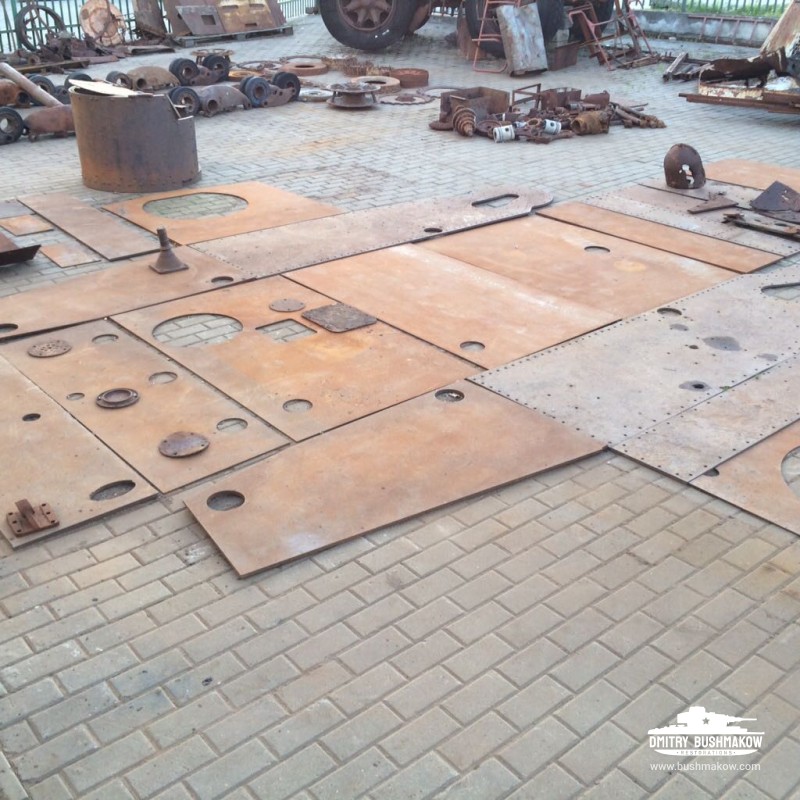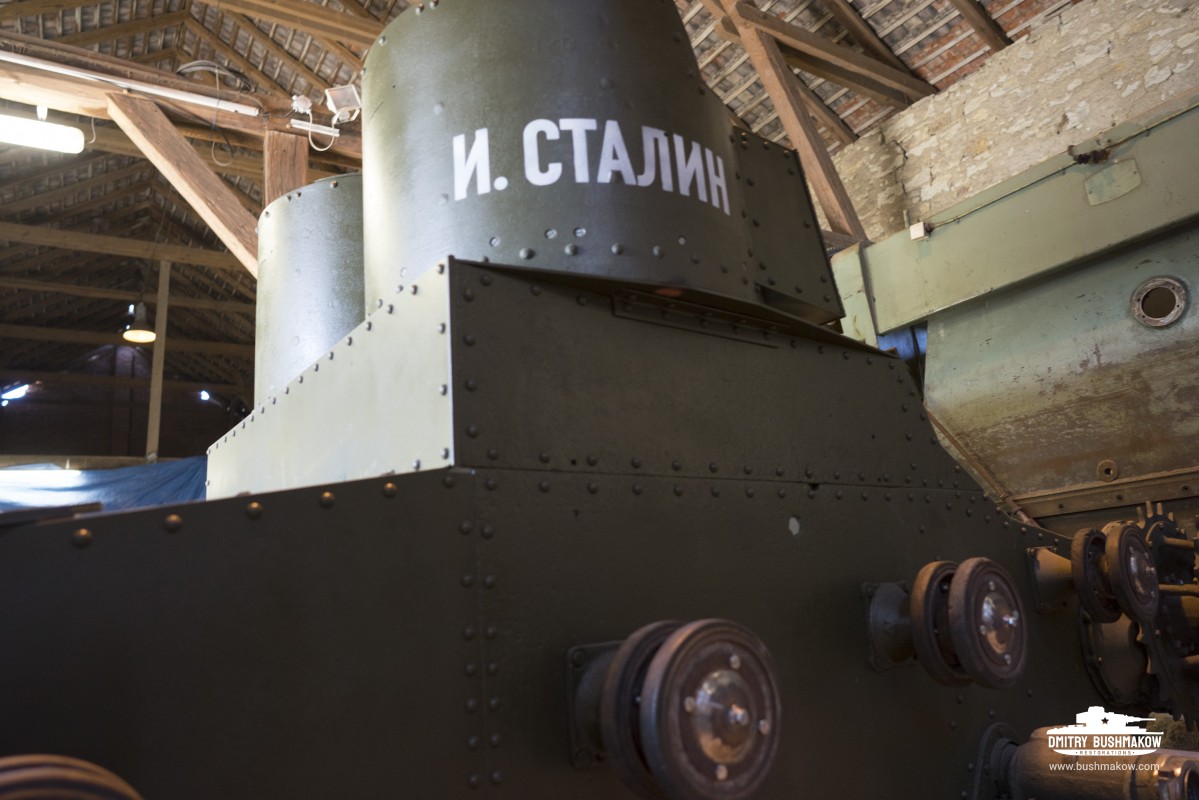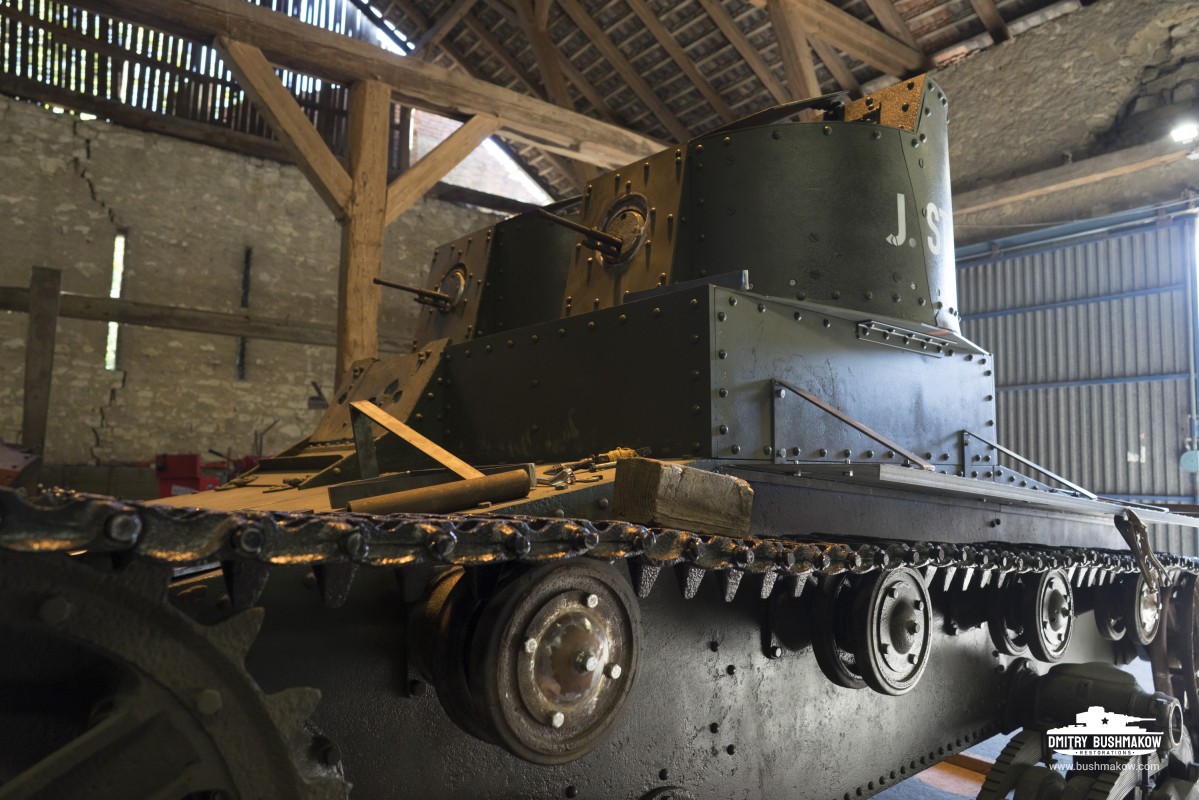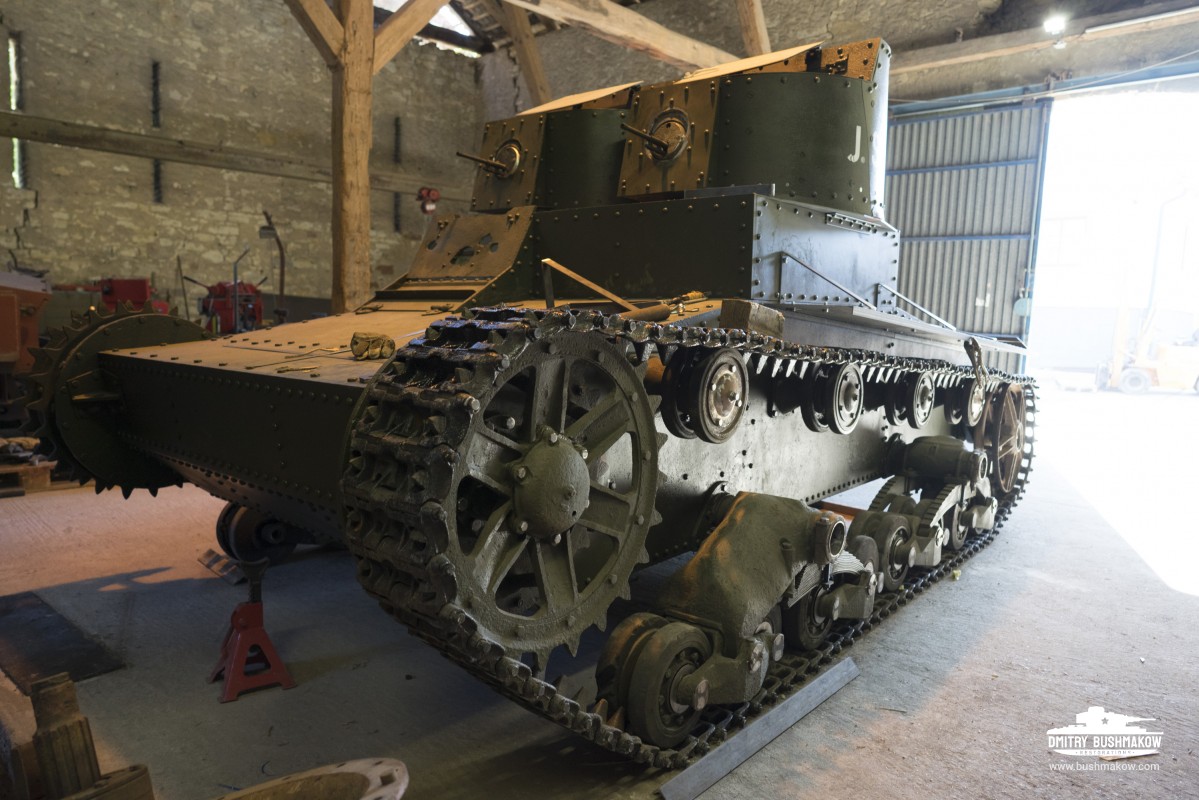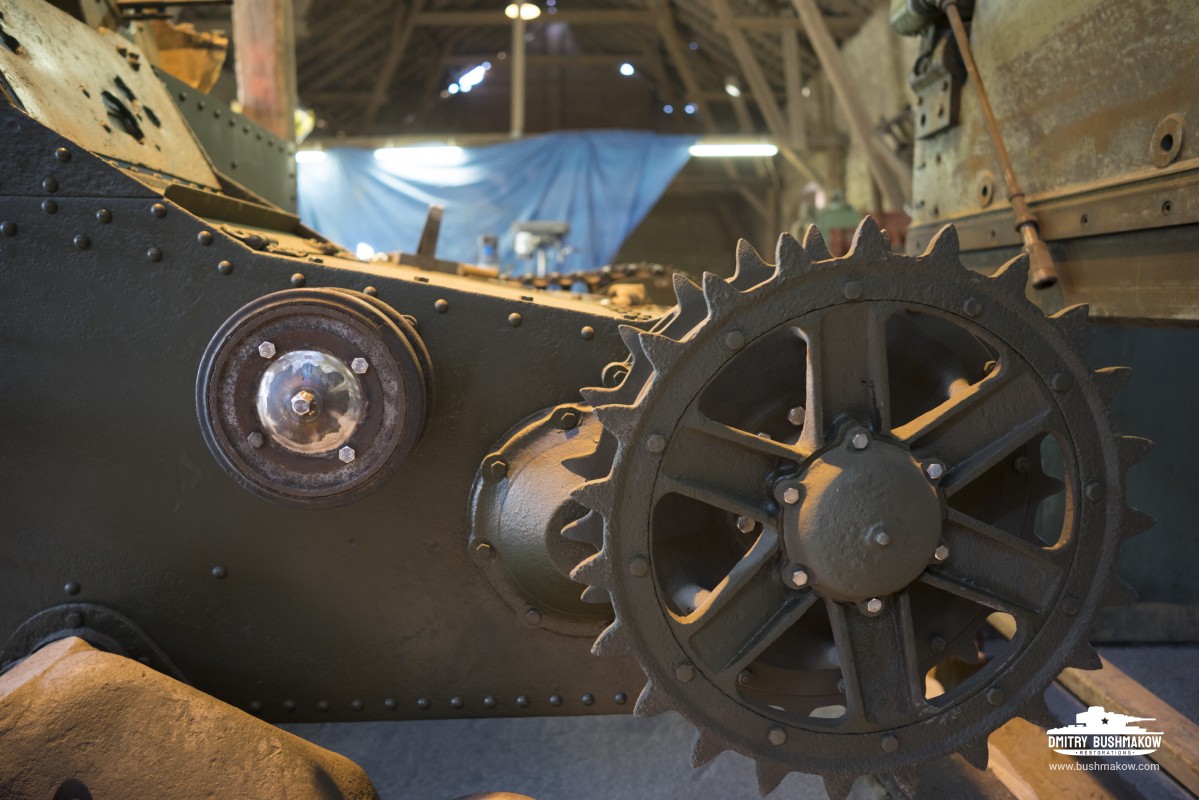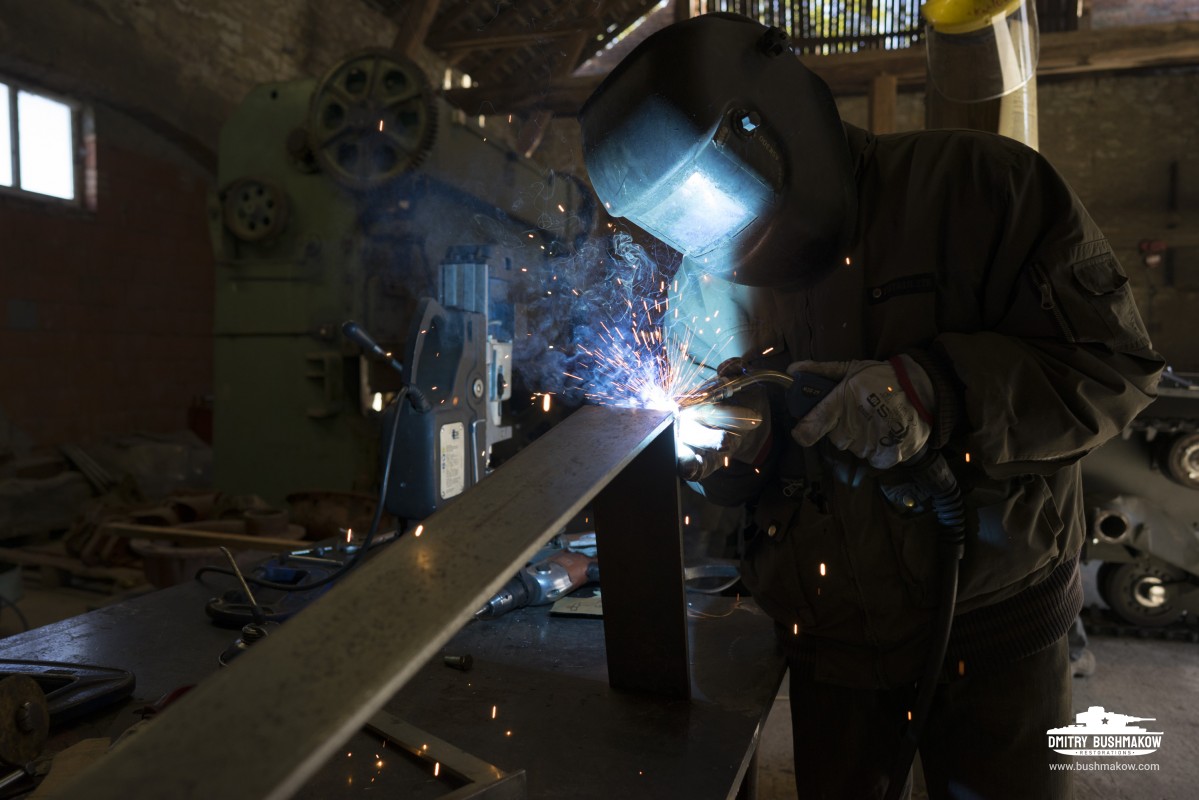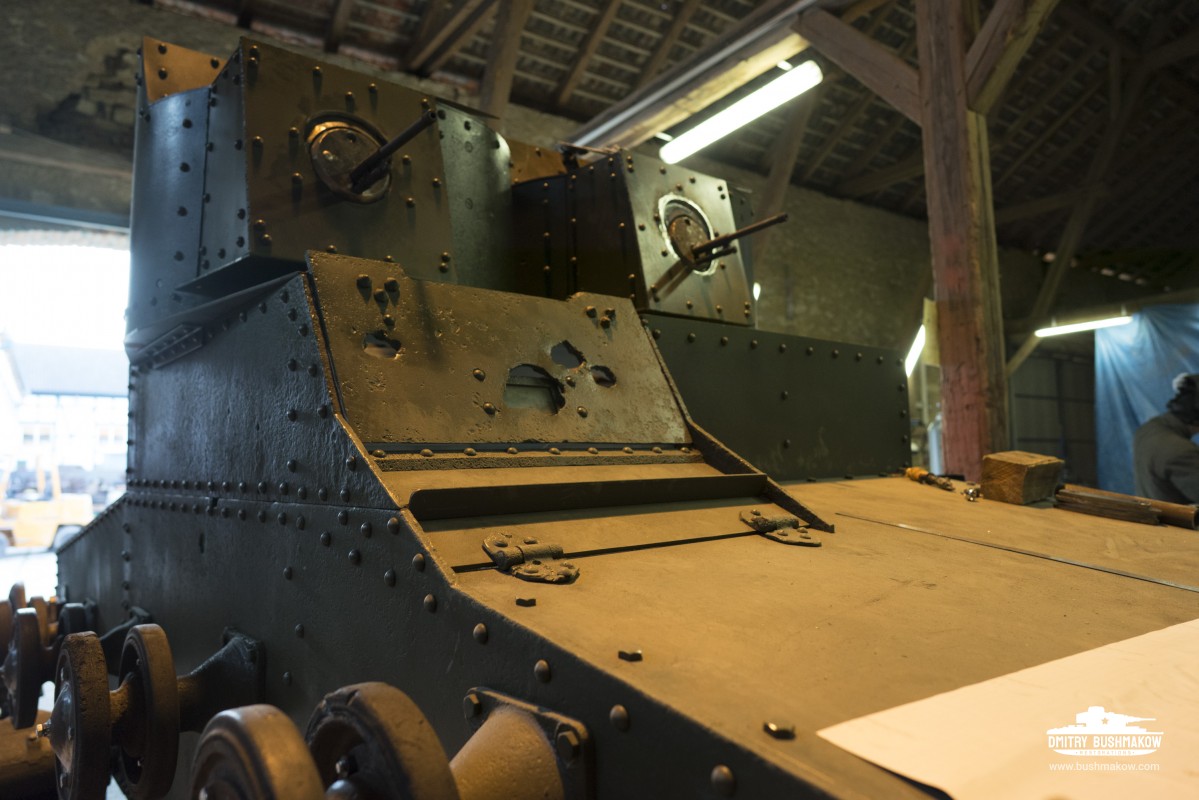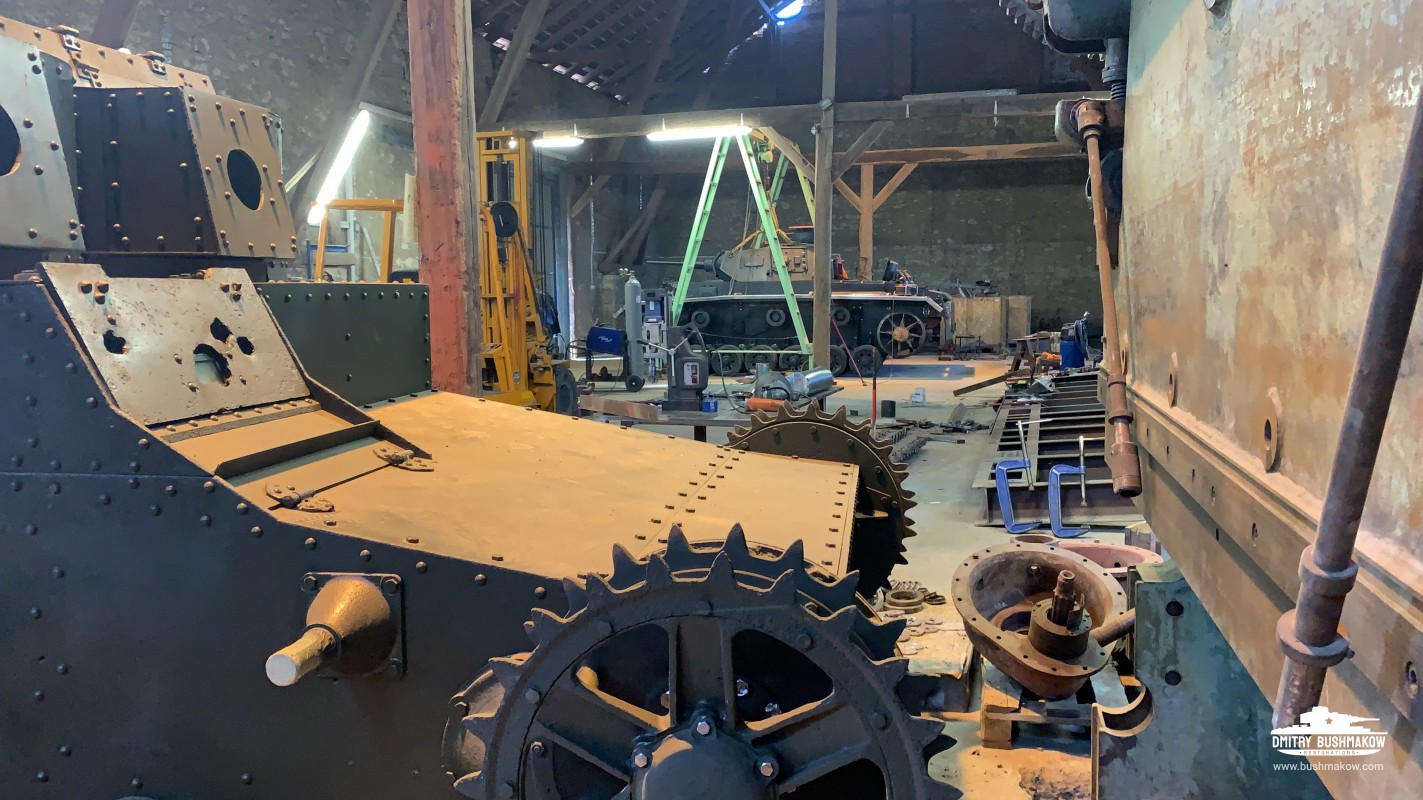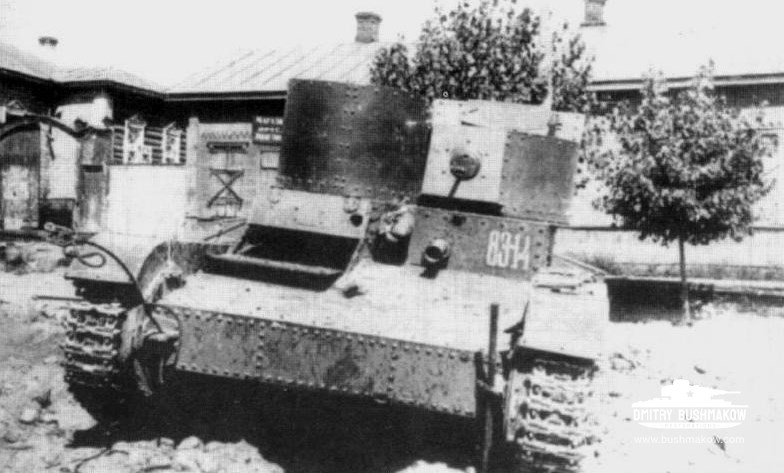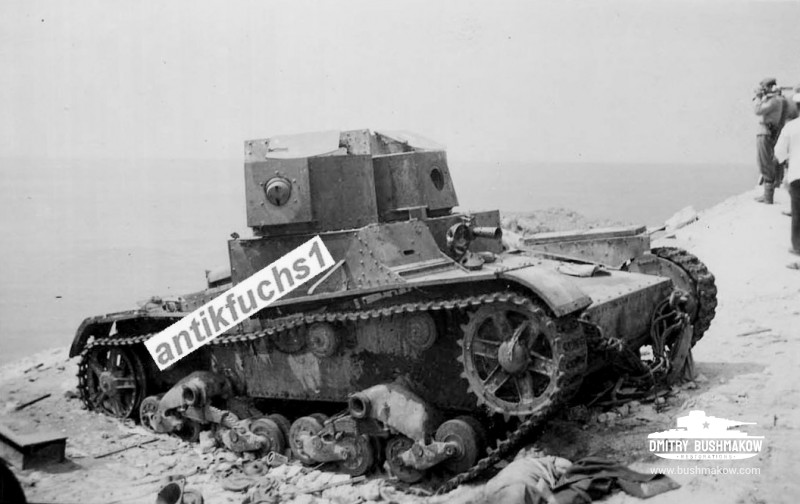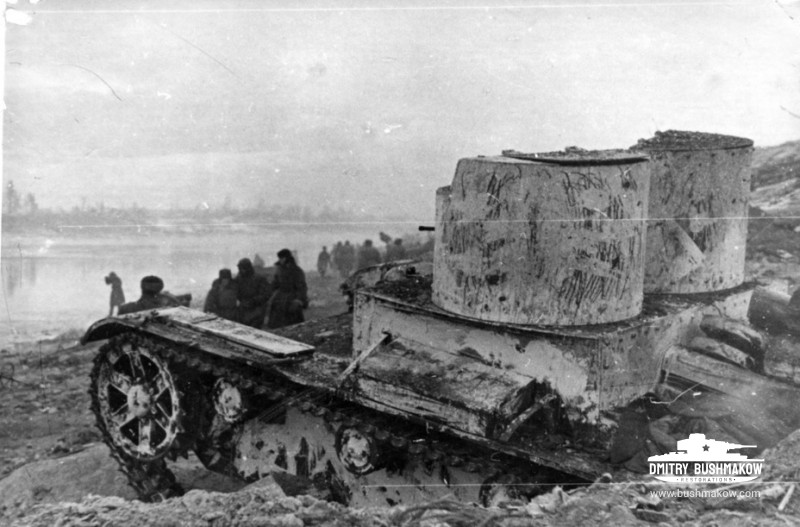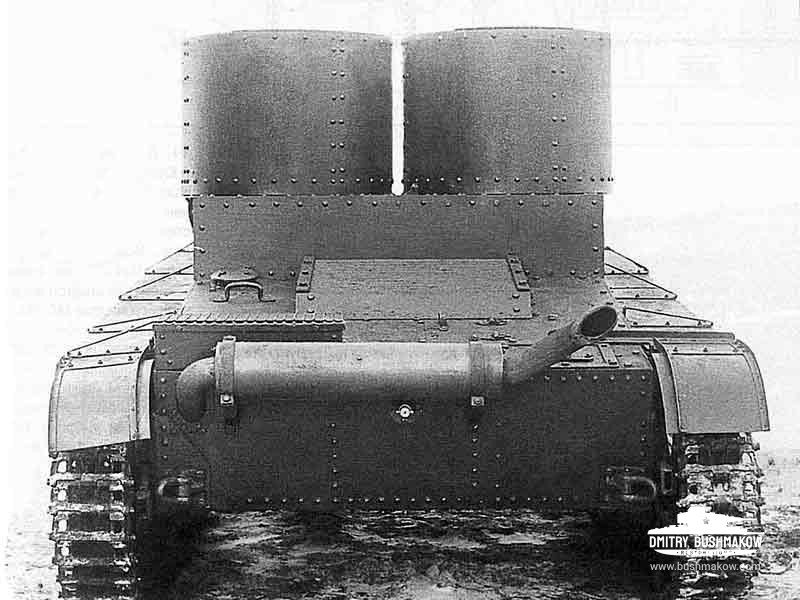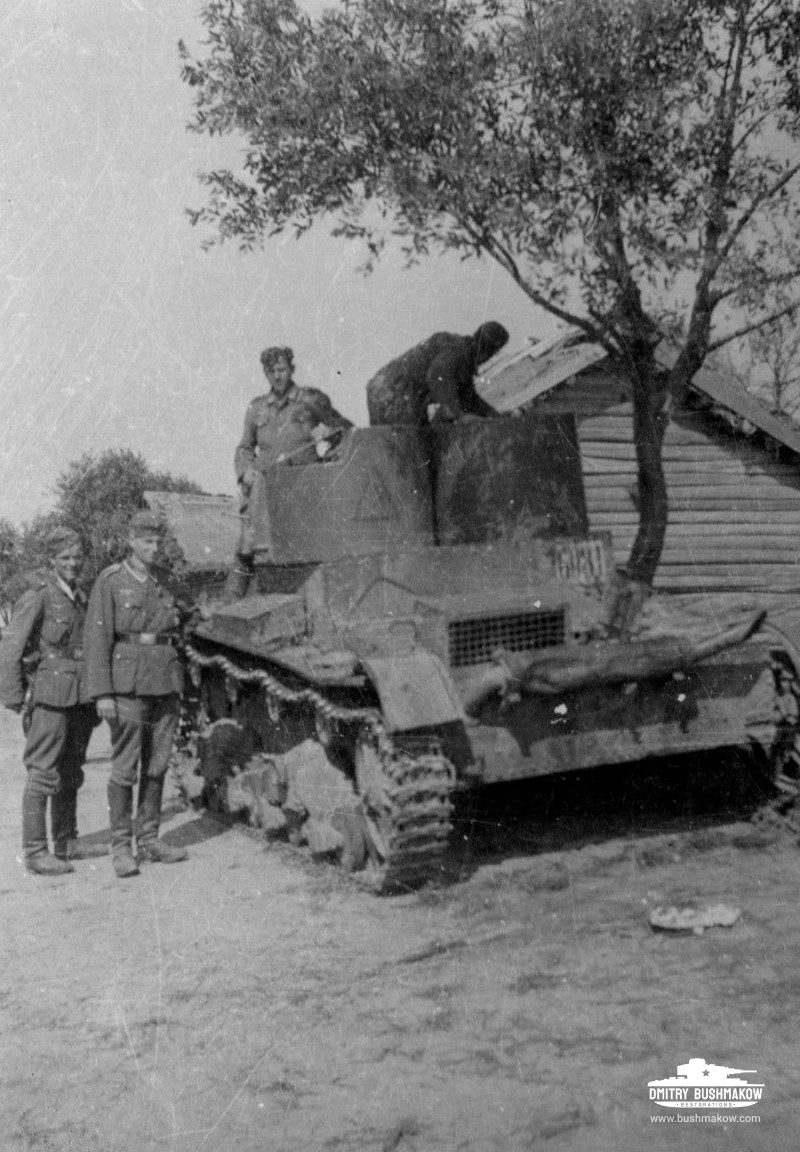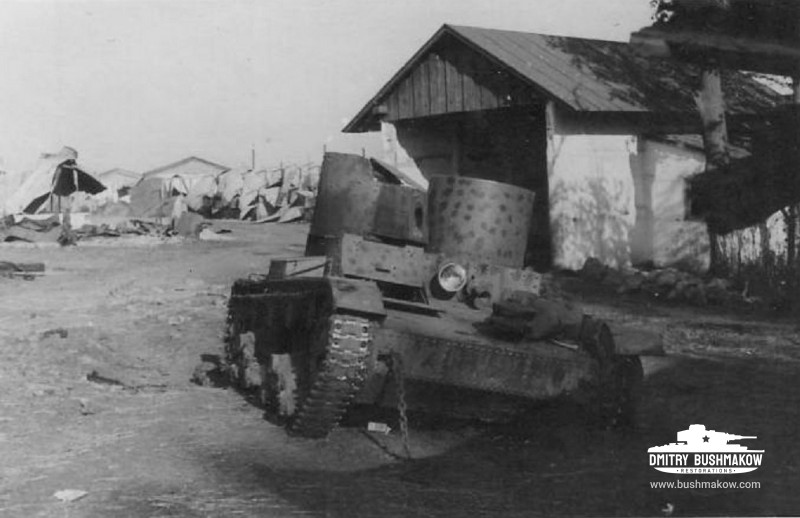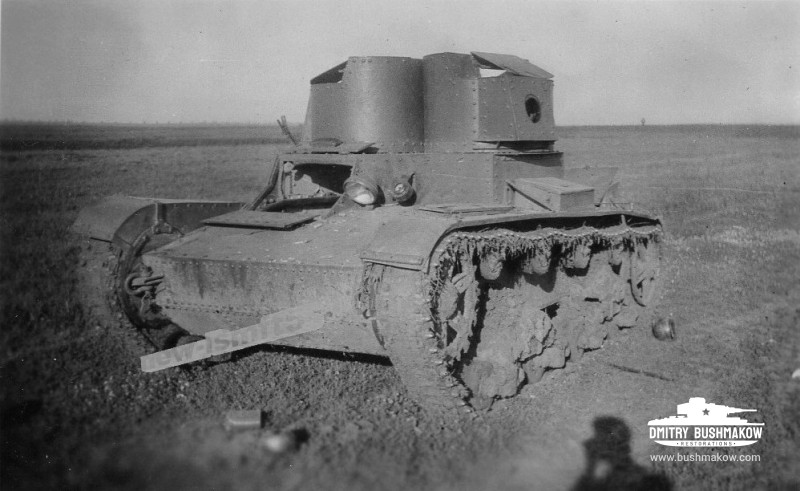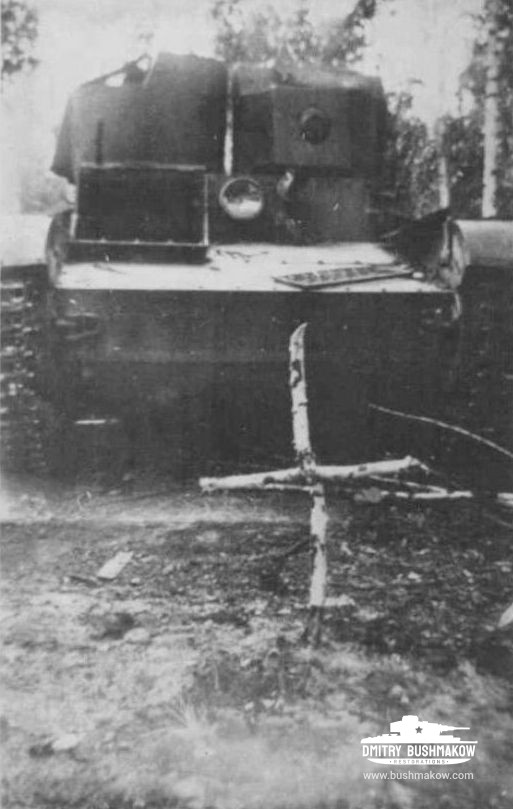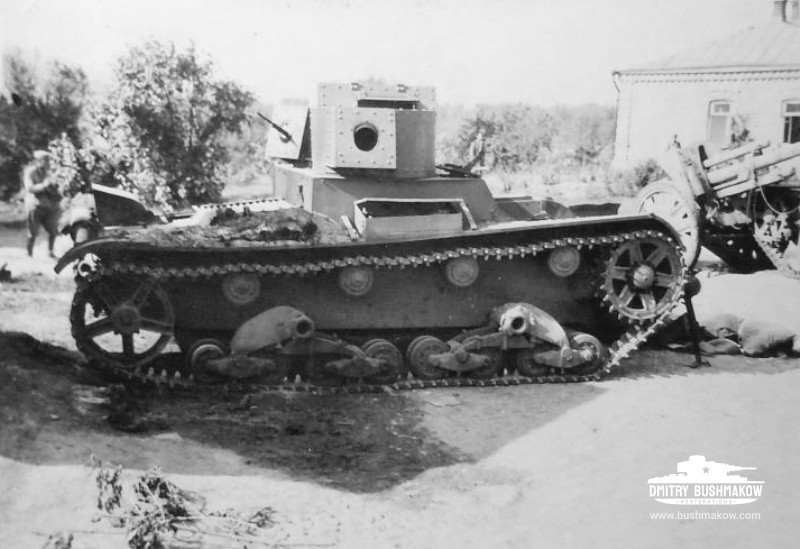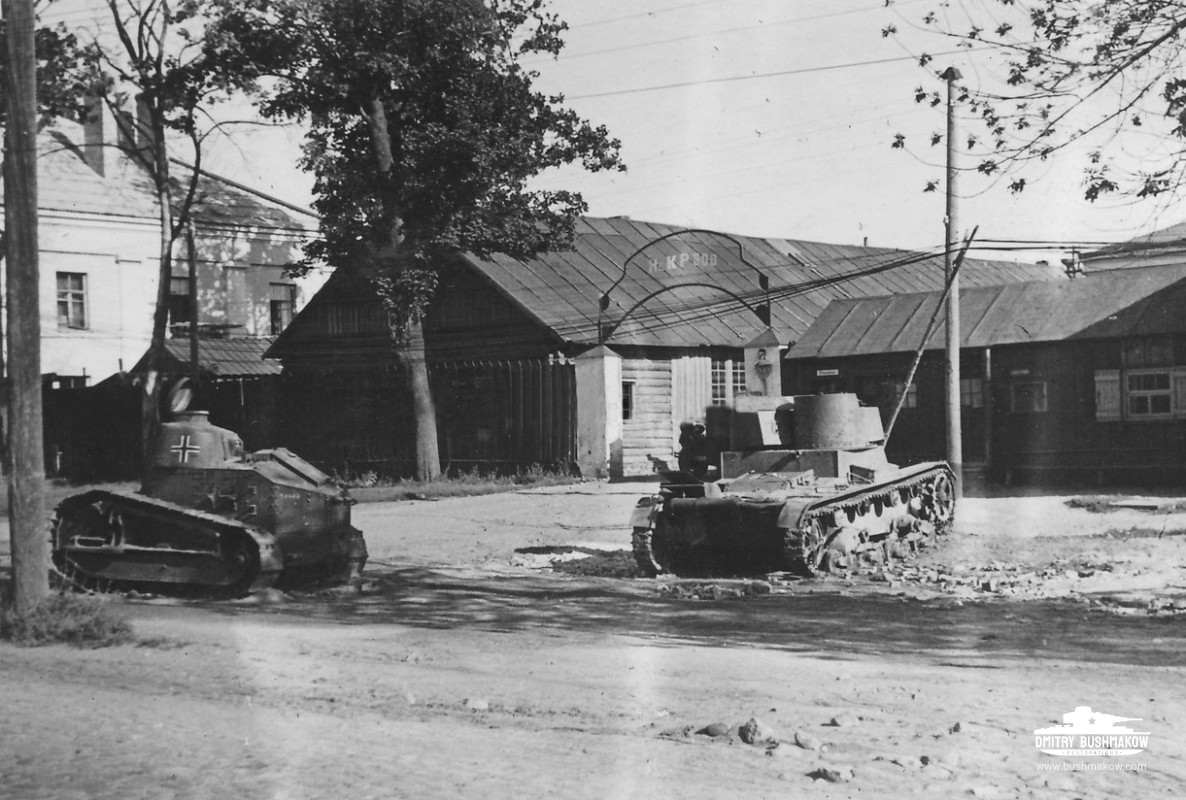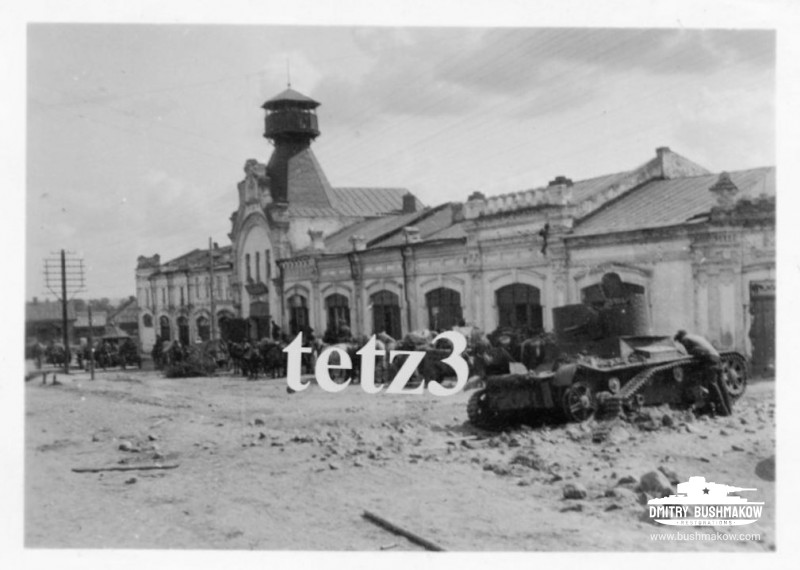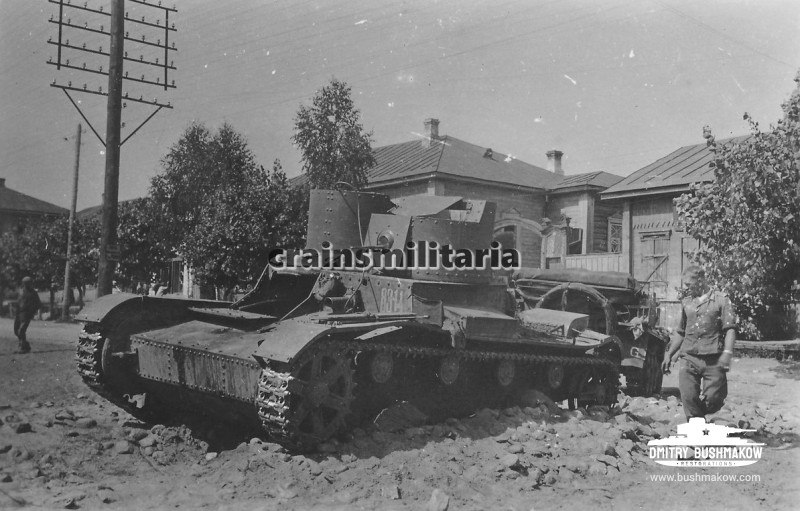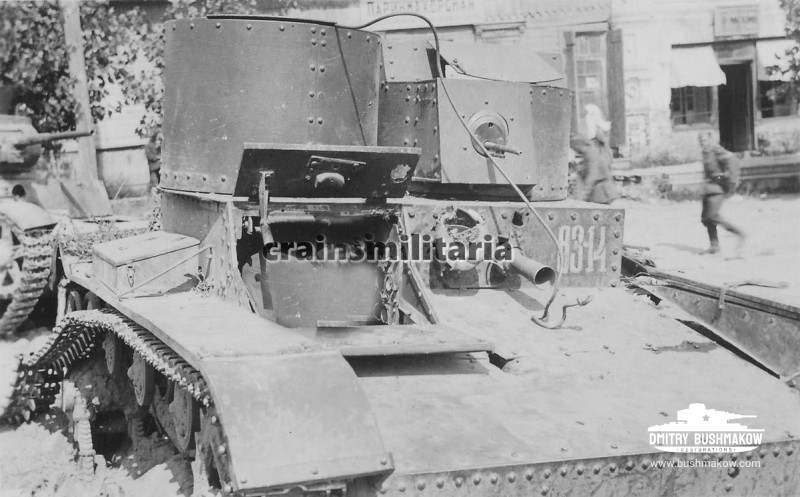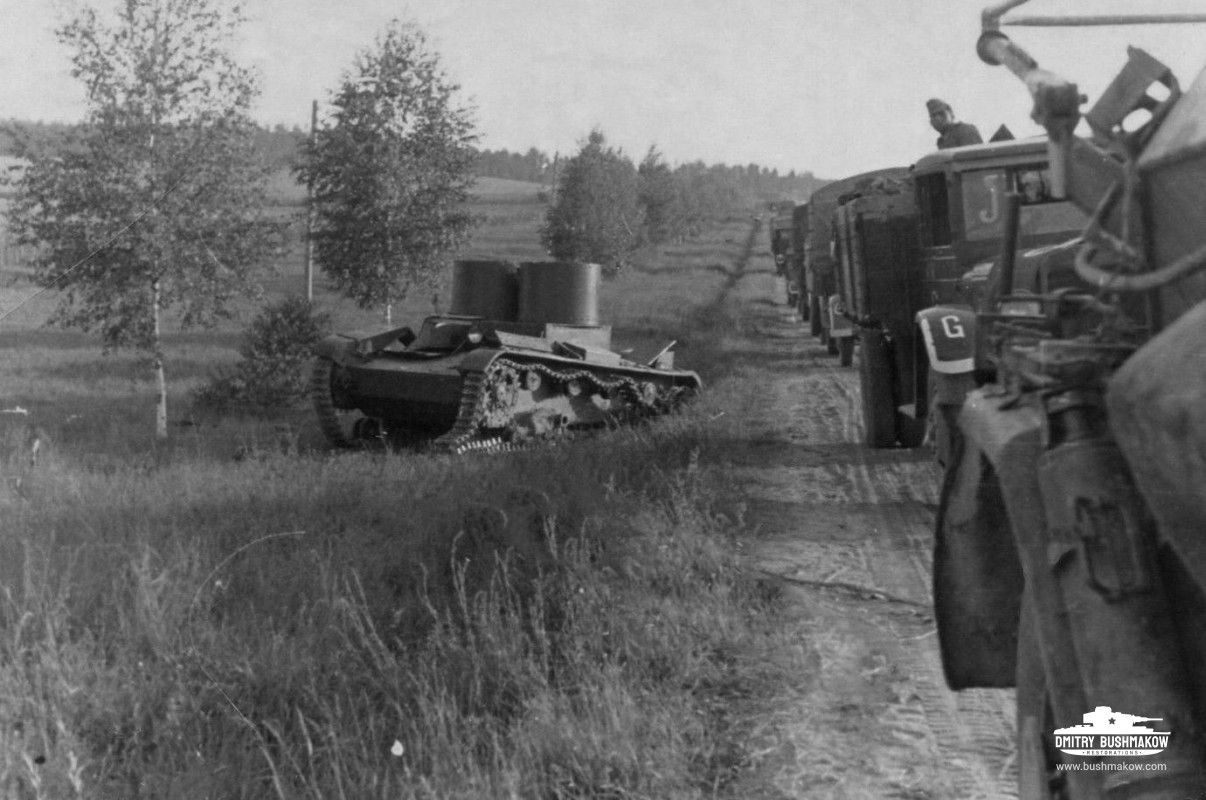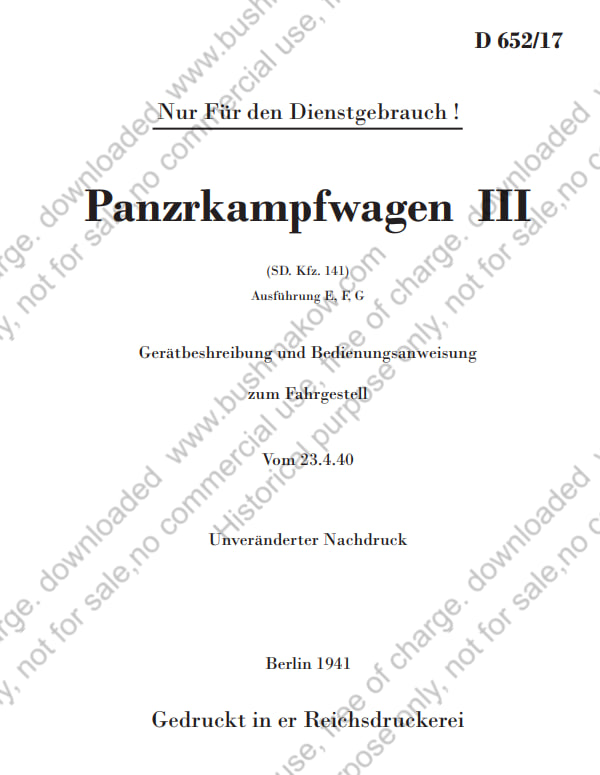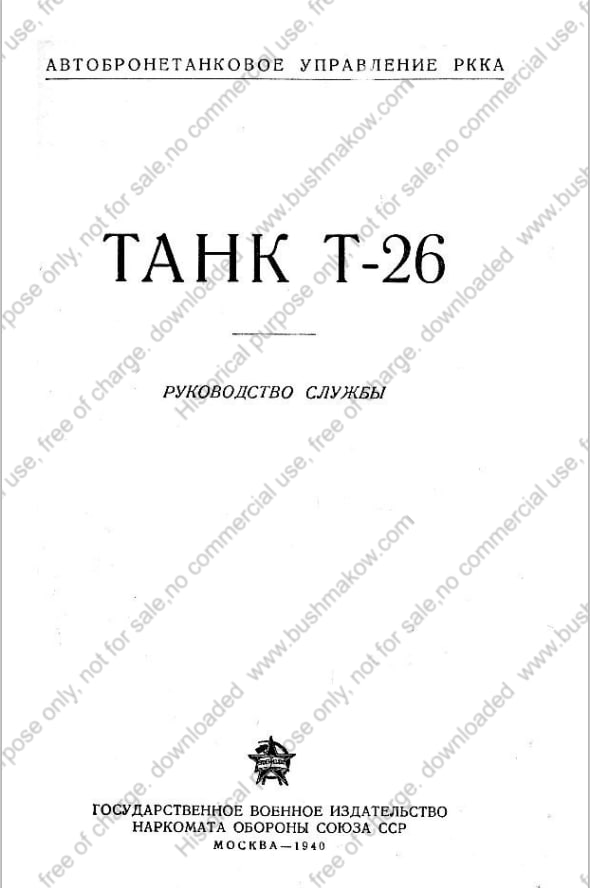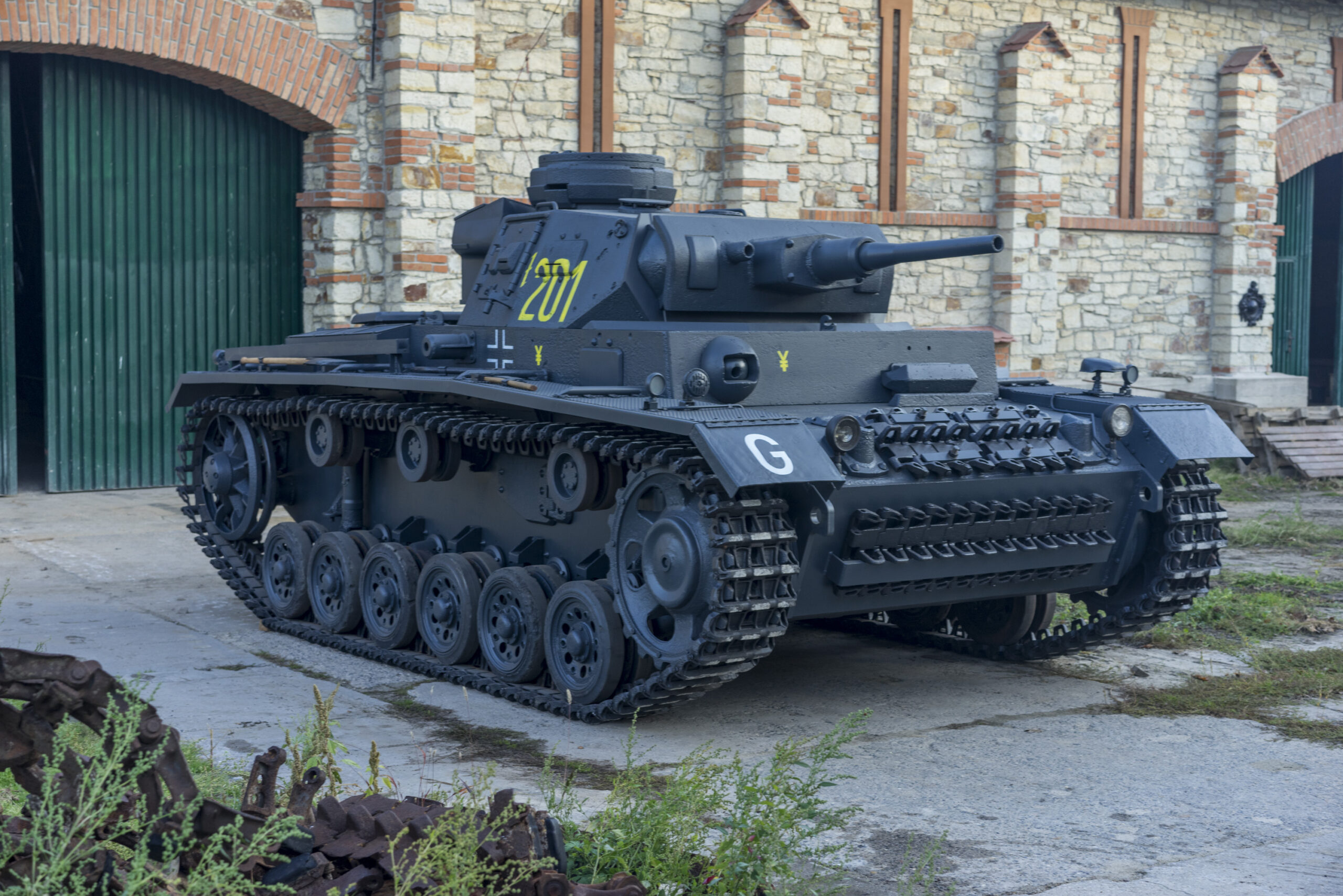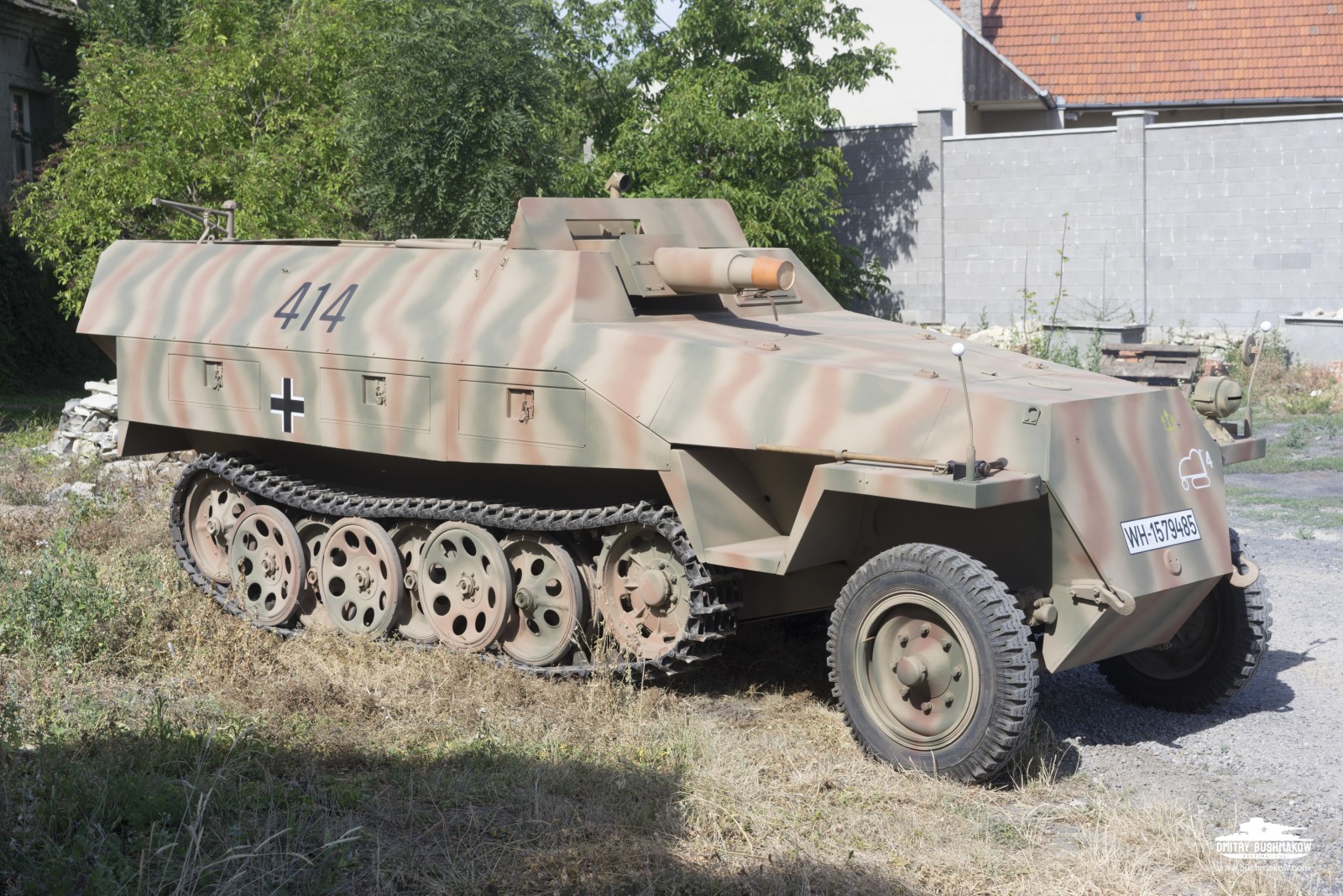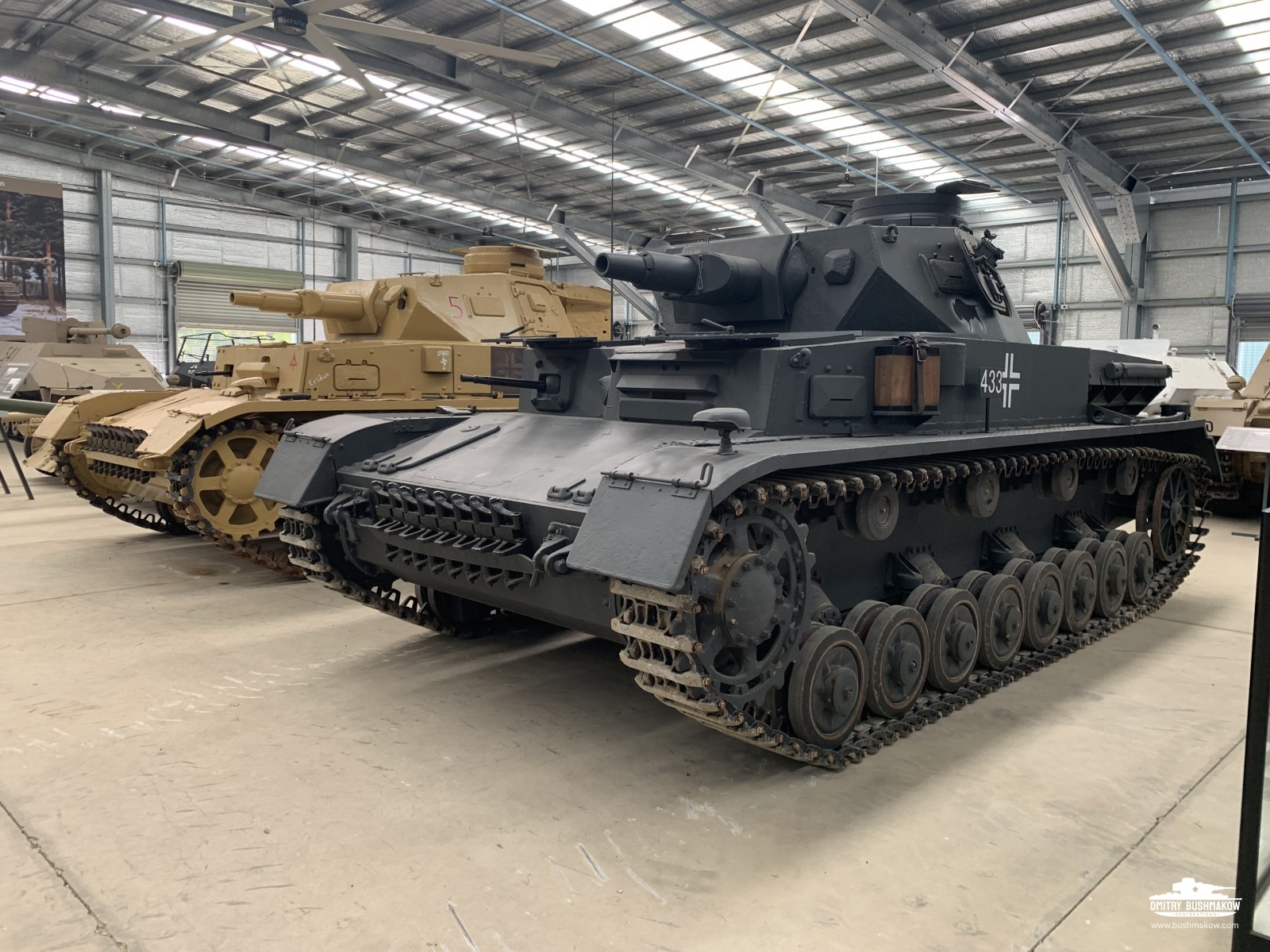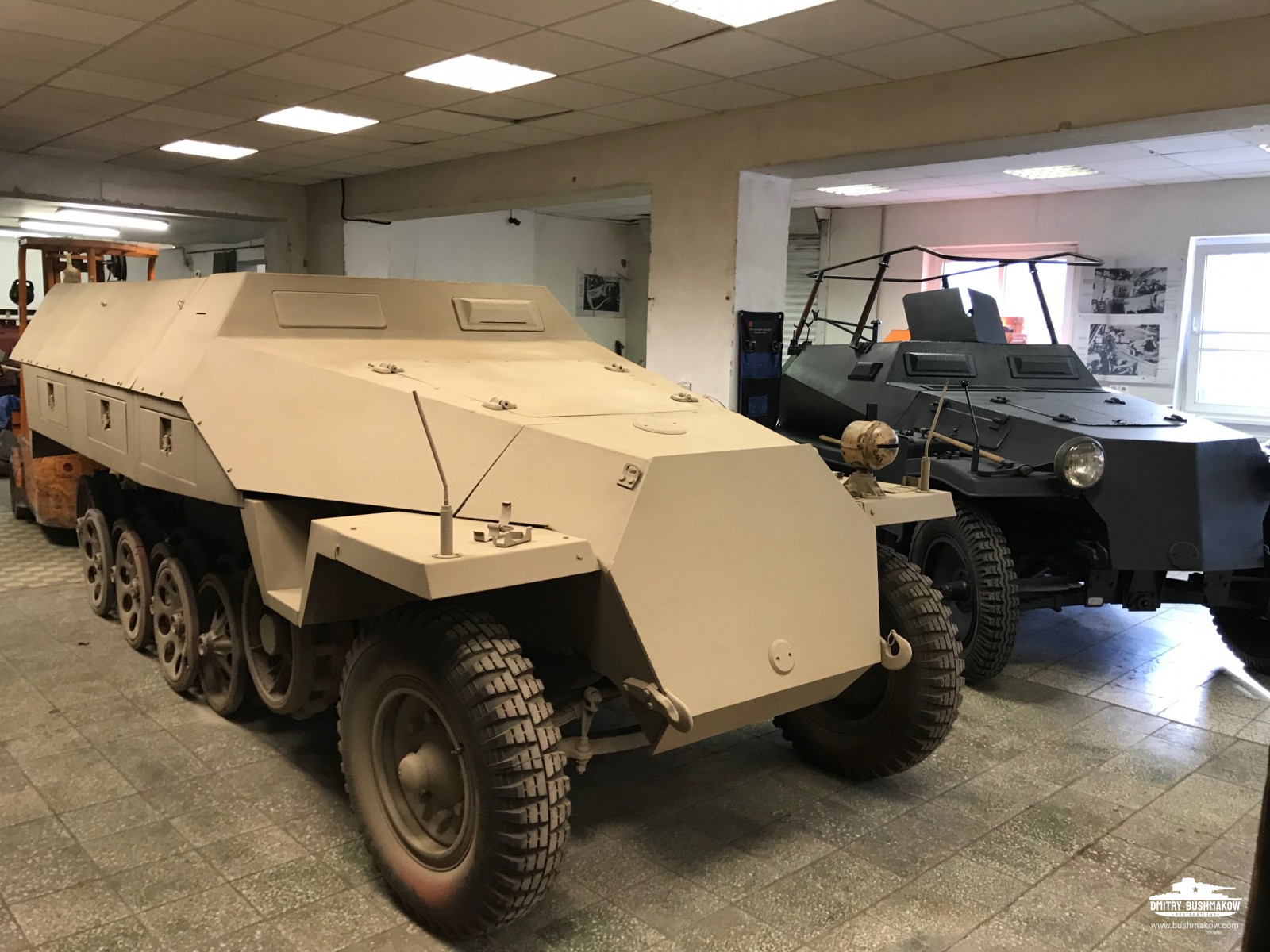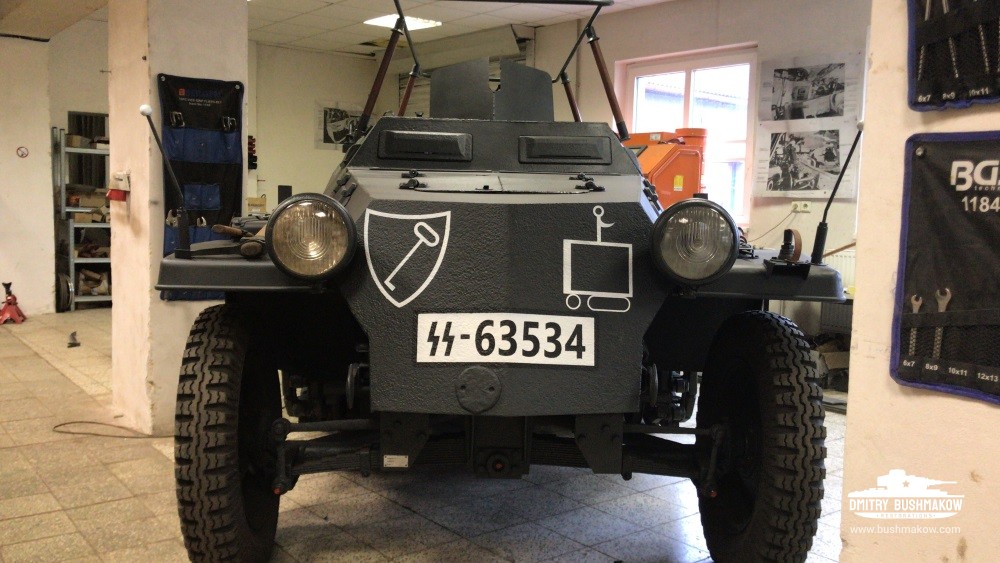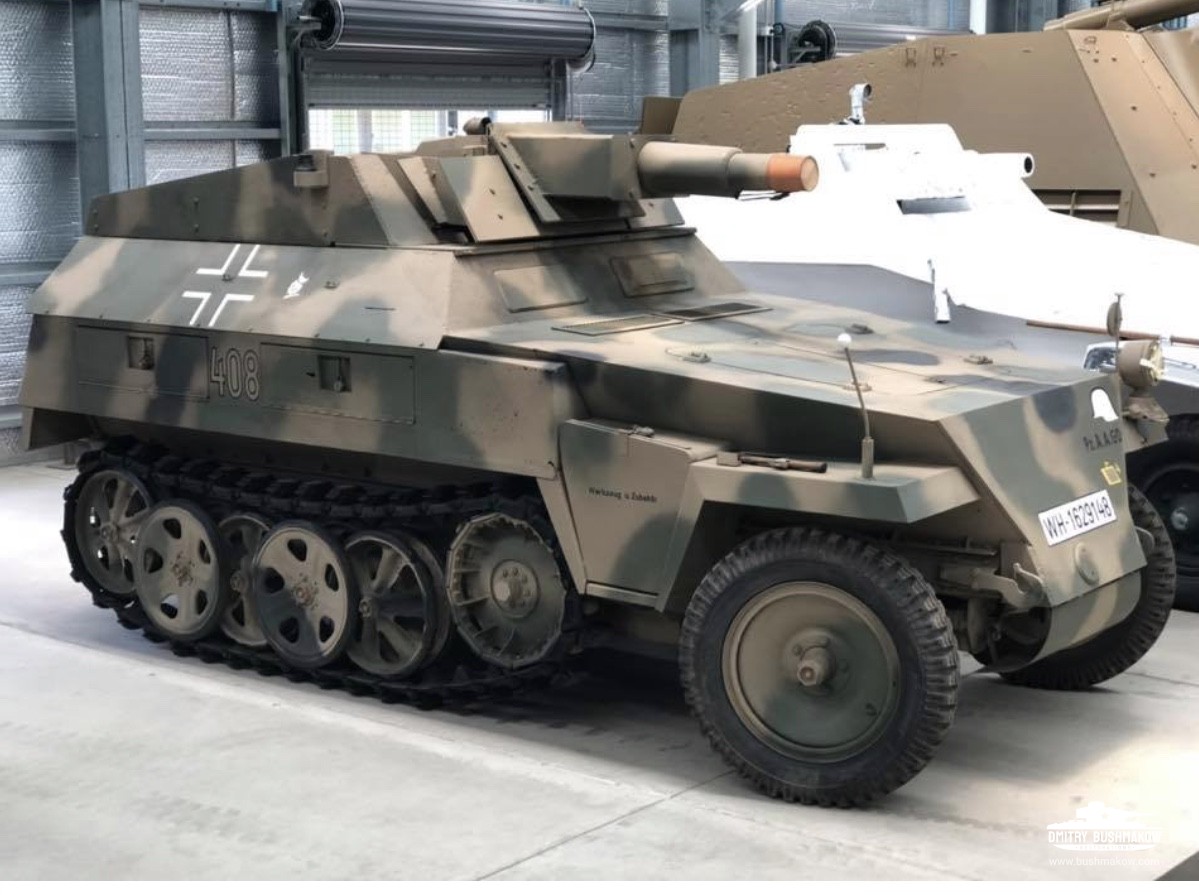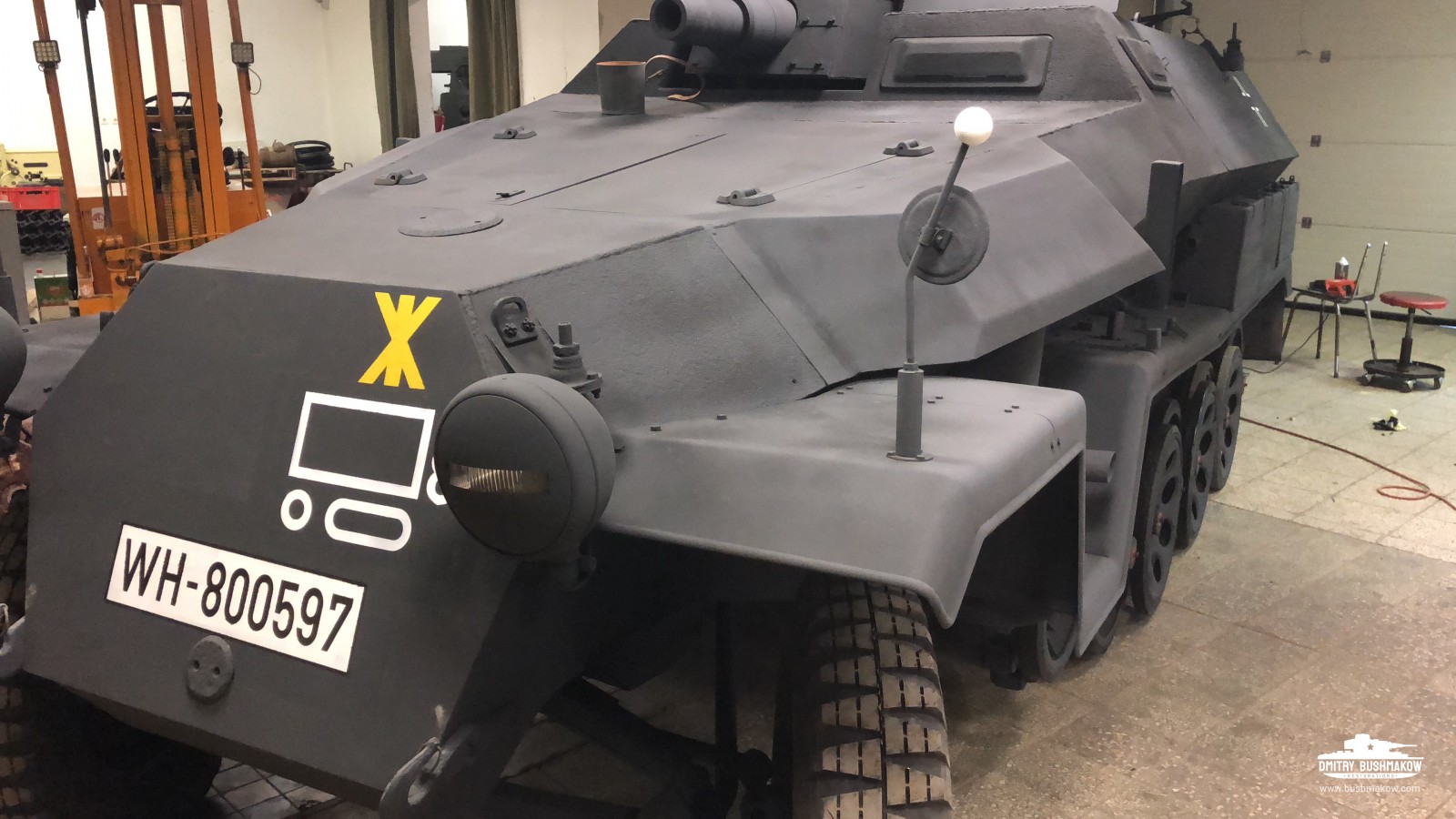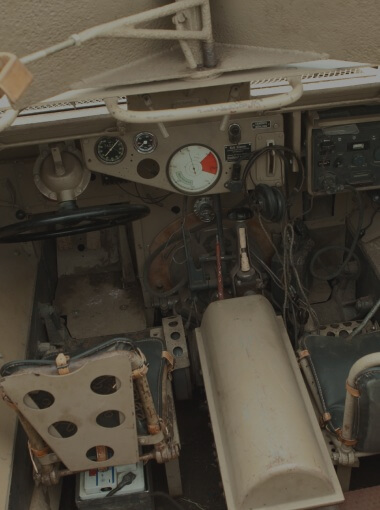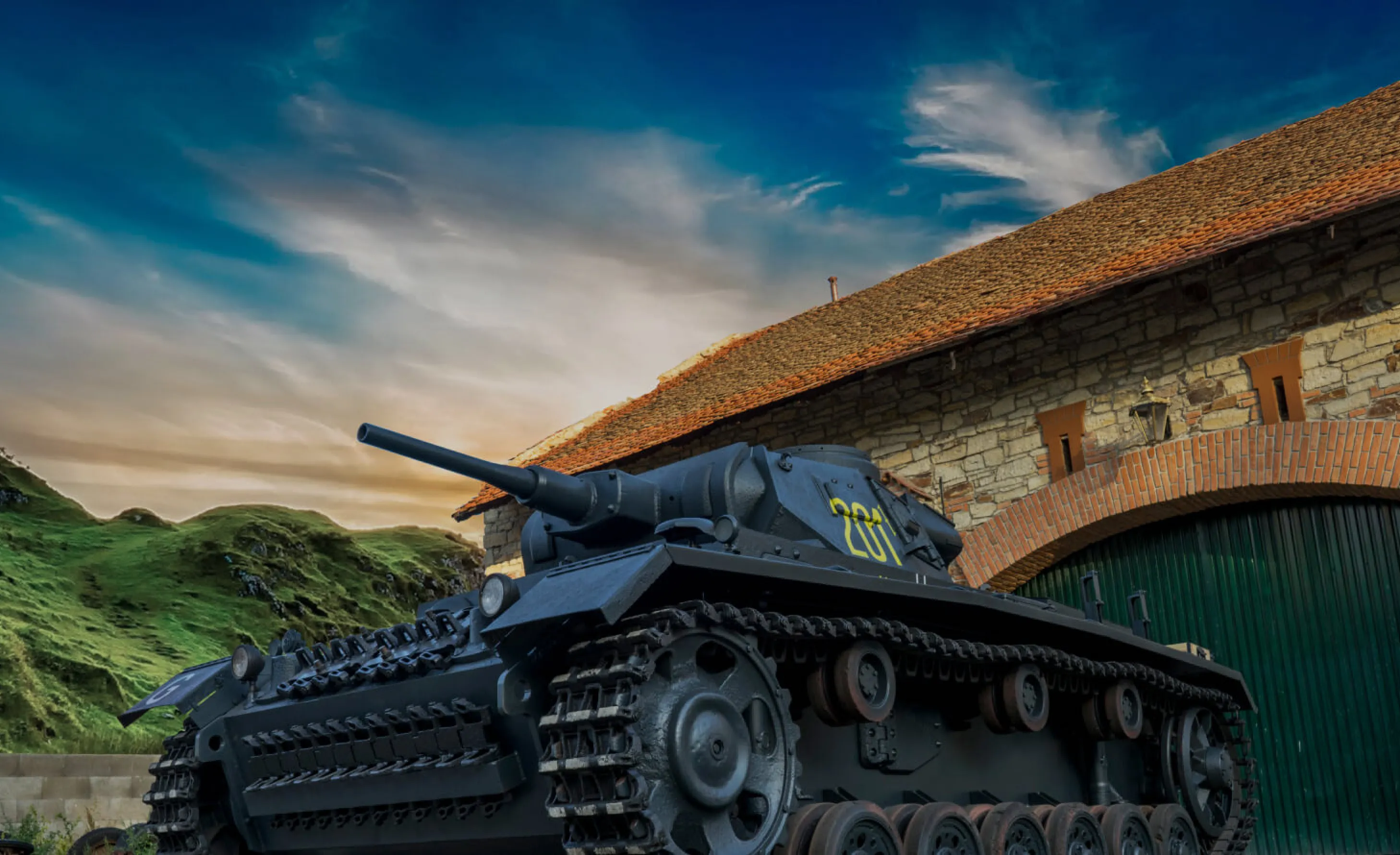

T-26 — Soviet light tank. The most numerous tank of the Red Army, and Finnish Armies by the beginning of World War II and the Army of the Spanish Republic of the Civil War in Spain, the second largest Soviet tank produced after the T-34 of the 1930s — 1940s . Created on base of the British tank Vickers Mk E (also known as «Vickers 6-ton»), which used also in many armies of the world, adopted in the USSR in year 1931.
T-26/1931 took part in the Khasan lake and on the Khalkhin-Gol river, in the Polish campaign and the Soviet-Finnish war, World War 2 on Soviet, and on German side.
No twin T-26s were used in the Chinese army and in the battles of the Spanish Civil War, but only single-turret versions of the T-26/1933 type
T-26 tanks were popular at first, but weak armor and slow speed made it an easy prey for the enemy; the 1931 tank did not have a radio.
But there were several tricks that were characteristic of the T-26, which turned it into a good meat grinder on the front line. Here is what is known from the chronicles: “T-26 tanks, equipped with two turrets, were used as tanks for infantry fire support. The length of the (wheel) base was over 3 meters. The width of the infantry trenches was about 50-70 cm. This made it possible to use the T-26 in the first line of attack and to clear the enemy’s trenches. The tank stood on the trench, turned the turrets at 90 degrees to the course, so that the right turret covered the right side of the tank, similarly for the left one. Then the machine gunners fired densely aimed fire at the infantry, shooting through the entire trench in one burst.
One of the significant drawbacks of two-turret models was that the right and left arrows periodically interfered with each other to fire. With the advent of anti-tank rifles, the use of the T-26 became more risky, the armor of the tank was bulletproof. Despite the weak armor protection, the tank was tenacious due to the fact that the engine and tanks were located in the aft compartment behind the enclosure.
T-26 model 1931 — two-turret version with MG armament «trench cleaner»
Armament T-26 mod. 1931 consisted of two 7.62 mm DT-29 machine guns, located in ball mountings in the front of the turrets. The aiming of machine guns was carried out using diopter sights. The DT-29 had an effective firing range of 600-800 m and a maximum sighting range of 1000 m. The machine gun was powered from disk magazines with a capacity of 63 rounds, the rate of fire was 600, and the combat rate of fire was 100 rounds per minute. For firing, cartridges with heavy, armor-piercing, tracer, armor-piercing tracer and sighting bullets were used. As in other Soviet tanks, the installation of machine guns was quick-detachable to ensure their use by the crew outside the tank, for which the machine guns were equipped with bipods . The machine gun ammunition was 6489 rounds in 103 stores . “T-26 tanks, equipped with two turrets, were used as infantry fire support tanks. the width of the (wheel) base was about 2 meters. The width of the infantry trenches was about 50-70 cm. This made it possible to use the T-26 in the first line of attack and to clear the enemy’s trenches. The tank stood on the trench, turned the turrets at 90 degrees to the course, so that the right turret covered the right side of the tank, similarly for the left one. Then the machine gunners fired densely aimed fire at the infantry, shooting through the entire trench in one burst.
One of the significant disadvantages of two-turret models was that the right and left arrows periodically prevented each other from firing while concentrating on targets in the same direction (both forward or both backward).
Surveillance equipment on the T-26 of the first batch of the driver was limited to an inspection hatch, and for the commander and gunner — machine gun sights. in the fall of 1931, an open inspection slot was introduced in the hatch cover of the driver and the tower of increased height, in the upper part of which there was an inspection hatch, in the cover of which there were two inspection slots .
External communication on a battlefield the twin turret T-26 served as a flag signaling only.
First of all, in the spring of 1930, the soviet commission went to Great Britain, which in those years was considered to be the world leader in the production of armored vehicles. The attention of the commission was attracted by the light tank Vickers Mk E or «Vickers 6-ton» (eng. 6-ton), created by «Vickers-Armstrong» in 1928-1929 and actively offered for export. The commission planned to purchase one copy of the necessary equipment, but the company refused to sell single samples with documentation, as a result, an agreement was reached on the purchase of small batches of tanks, including 15 Vickers Mk.E units at a price of 42 thousand rubles ($11,830 US) in prices of 1931, with a full set of technical documentation and a license for production in the USSR. Tank supply were to be settled from September 1930 to January 1931. «Vickers-Armstrong» offered several variants of the tank, «Model A» with two single turrets with 7.7-mm machine guns «Vickers» and «Model B» with a two-man turret with a 47-mm cannon and 7.7-mm machine gun, but the Soviet side purchased only two-turret vehicles. In the USSR, Mk.E received the designation V-26 (Vickers-26)
The assembly of the tanks was carried out at the Vickers-Armstrong factories, and Soviet specialists also took part in it to familiarize themselves with the technology. The first B-26 was sent to the USSR on October 22, 1930; by the end of the year, three more tanks were delivered to the USSR.
The USSR, the first of the arriving tanks were placed at the disposal of the «special commission for new tanks of the Red Army» under the leadership of S. Ginzburg, whose task was to select a tank for adoption by the army. From December 24, 1930 to January 5, 1931, three B-26s were tested in the Poklonnaya Gora region, on the basis of which the commission made «rather restrained» conclusions. But at the demonstration of two tanks in front of representatives of the high command of the Red Army and the Moscow military district, the B-26, which took place on January 8-January 11, aroused their stormy approval, and already on January 9, K. Voroshilov’s order followed: “… finally decide on the expediency of organizing the production of B-26 in the USSR «, and Ginzburg was ordered to submit to the People’s Commissariat of Military Affairs a list of the advantages and disadvantages of the B-26 noted during the tests in comparison with the experimental Soviet-developed T-19 tank (the T-18 increased in size and cost twice as much as the T-26). in a report presented on January 11, 1931, it was concluded that the B-26 transmission and chassis were reliable and simple, and that these systems met the requirements of the Red Army, but it was also said that the engine (Siddeley Puma 1917 model) was not suitable for installation on a tank. and its design does not allow for power increase with traditional forcing methods. Among the advantages of the tank were also good optical sights of machine guns and an easy-to-manufacture shape of the hull, among the shortcomings — difficult access to the engine and transmission and the inability to carry out maintenance of the engine in battle from inside the tank. In general, it was noted that «… the B-26, despite the considered shortcomings, is capable of developing high speed and maneuverability and is undoubtedly the best example of all currently known samples of foreign tanks.» …
According to intelligence data, Poland is also purchasing Vickers Mk.E samples and, according to the estimates of the Red Army leadership, by the end of this year, with Anglo-French help, produce more than 300 tanks of this type, which would give the Polish tank forces an advantage. In this regard, the (Revolutionary Military Council) of the Red Army on February 13, 1931, the Revolutionary Military Council decided to adopt the B-26 into service with the Red Army as «the main escort tank for combined arms units and formations, as well as tank and mechanized units of the RGK» with the assignment of the T-26 index to it.
In August 1931, the production of the first serial batch of 15 tanks started, which differed from the pre-production ones with increased height turrets with an inspection hatch and slots in the upper part, more adapted for production on available equipment. But even on these tanks, the engines turned out to be inoperative, and it was possible to achieve the movement of serial tanks on their own only in the fall of the same year. The haste to master production led to the fact that the plant did not have a precisely established technological process until 1934, and the cost of tanks was almost twice the cost of the B-26 manufactured in Great Britain. By the end of 1931, 120 tanks had been manufactured, but due to the poor quality, none of them could be handed over to military acceptance at first. Only after lengthy negotiations did the army agree to accept 100 tanks, most of them conditionally. Even 19 tanks accepted by military acceptance were unarmed. However, the plant was ordered to replace the engines on the tanks, since when operating under load, they «emitted multiple extraneous noises and experienced interruptions.» About 35 of this first hundred had non-armored steel hulls and turrets. Subsequently, they were to receive full body armor.
This situation led to the resumption of work on the T-19 and other promising models with which it was proposed to compensate for the numerical shortage of escort tanks in the event of a threat of war. However, the plan adopted in September 1931, which provided for the production of 3000 T-26s in 1932, was not adjusted even after the inability to establish production became clear. Only in February 1932, the Defense Commission allowed the plant to make any changes to the design of the tank that «would not reduce the combat qualities and contribute to an increase in production.» In addition, for better organization of work, tank production at the Bolshevik plant was allocated in February to a separate plant No. 174]. The number of allied enterprises by the end of 1932 had reached fifteen, including: Izhora Plant (armored hulls and turrets), Krasny Oktyabr (gearboxes and cardan shafts), Krasny Putilovets (chassis), Bolshevik «(Engine semi-finished products) and Plant No. 7 (boiler and tin products). In addition, it was planned to involve NAZ (the future GAZ built under Ford license) and AMO in the production of engines. On a number of them, problems arose with the production of such complex assemblies, as a result of which the delivery times for components were delayed, and the percentage of rejects reached 70-88% for engines and 34-41% for hulls. As a result of all this, the plan for the production of tanks was again thwarted: by July, only 241 tanks were delivered to the army in addition to those adopted in 1931, and in total, by the end of the year, the plant managed to produce 1410 tanks, of which 1361 were presented for delivery, and only 1032 were accepted ..
Production of T-26 for the Red Army (according to GABTU archive)
T-26 double-turret 1627 Tanks
12 tanks were produced in the form of cut away training; 35 of non-armored steel were accepted conditionally with the obligation to replace the hull with an armored one; 53 tanks were converted into HT-26 in 1932.
At the beginning of 1941, 130 two-turret tanks were converted into single-turreted ones by installing on them towers from the HT-133, but with a 45-mm gun.
Design
The layout of the T-26 of the 1931 model (the T-26 of the 1931 and 1932 models had a two-turret layout)
The T-26 had a layout with the placement of the engine compartment in the aft, transmission — in the frontal and combined fighting compartment and control compartment — in the middle of the tank. T-26 mod. 1931 and arr. 1932 had a two-turret layout, T-26 mod. 1933 and subsequent modifications — single-turret. The tank’s crew consisted of three people: on the two-turret ones — the driver, the gunner of the left tower and the tank commander, who also served as the gunner of the right tower; on single-turreted ones — the driver, gunner and commander, who also performed the functions of a loader.
Engine and transmission
The T-26 was equipped with an in-line 4-cylinder four-stroke air-cooled carburetor engine, which was a copy of the 1917 British aircraft engine «Armstrong-Sidley Puma» and had the designation «GAZ T-26». The engine had a working volume of 6600 cm³ and developed a maximum power of 91 liters. from. / 66.9 kW at 2100 rpm and a maximum torque of 35 kg m / 343 Nm at 1700 rpm.
The engine was located in the engine compartment along the longitudinal axis of the tank, a feature of its configuration was the horizontal arrangement of the cylinders. To the right of the engine in the engine compartment was a fuel tank with a capacity of 182 liters, and the cooling system, which included one centrifugal fan, was located in the casing above the engine.
The T-26 transmission consisted of:
Single disc main dry friction clutch (Ferodo steel) mounted on the engine.
A propeller shaft that passed through the fighting compartment.
A five-speed (5 + 1) mechanical three-way gearbox located in the control compartment to the left of the driver.
Swing mechanism, consisting of two multi-disc side clutches of a springless type and band brakes with ferodo linings.
Single stage final drives.
The undercarriage of the T-26, applied to one side, consisted of eight double rubberized road wheels with a diameter of 300 mm, four double rubberized support rollers with a diameter of 254 mm, a sloth and a front drive wheel. The suspension of the track rollers is interlocked in interchangeable bogies of four, on leaf springs. Each bogie consisted of two rocker arms with two rollers, one of which was pivotally connected to a cast balancer, in turn hinged to the tank hull, and the other was attached to two parallel quarter-elliptical springs rigidly connected to the balancer. Tracks T-26 — 260 mm wide, with an open metal hinge, made of chrome-nickel or manganese steel casting.
Modernization and discontinuance
The T-26 of the 1931 model was modernized by the addition of a cannon to replace the machine gun of the right turret of the 1932 type, and in 1933 it was replaced by a single-turret tank of the 1933 model with a new very powerful 45 mm cannon, it became the most massive light tank in the USSR in the second half of the 1930s This tank of direct support of infantry on the battlefield in the early 1930s was the leader in its class, but the rapid development of tank building and the appearance in almost all armies of the world of inexpensive massive anti-tank guns changed the situation downwardly for the USSR. One of the first news of the urgent need for a significant modernization of the T-26 was a report in 1936 by designer Semyon Aleksandrovich Ginzburg to the head of the Red Army’s armored vehicle department (ABTU) on the appearance of new foreign tanks superior to the T-26 in a number of characteristics. In particular, it was recommended to pay attention to the French Renault tanks R 35 and Forge-e-Chantier FCM 36 and the Czechoslovakian Skoda Š-IIa, which have already implemented promising technical solutions: welding and casting of thick armor parts, suspension with high performance characteristics.
At the beginning of 1938, the Soviet military realized that the T-26 was rapidly becoming obsolete, as noted by S. A. Ginzburg a year and a half earlier. By 1938, the T-26, still surpassing foreign tanks in armament, began to inferior to them in terms of other characteristics. First of all, they noted the weakness of the armor and the insufficient mobility of the tank due to the low
Process in detail
Original historical photos
Specifications
|
Crew
|
3
|
|
Communication
|
flag signal
|
|
Main armament
|
two DT-29 mashine gun
|
documentation
Services

